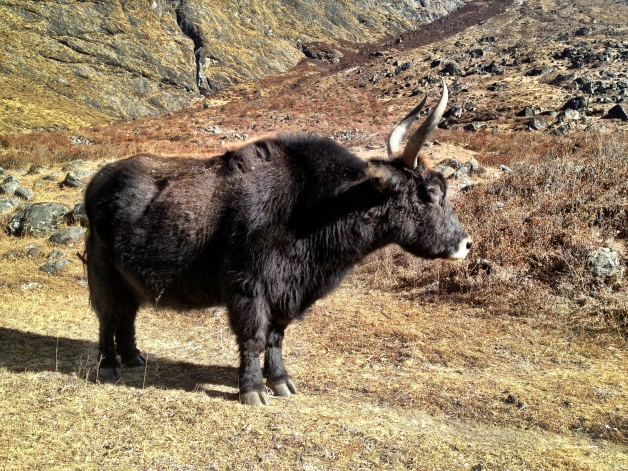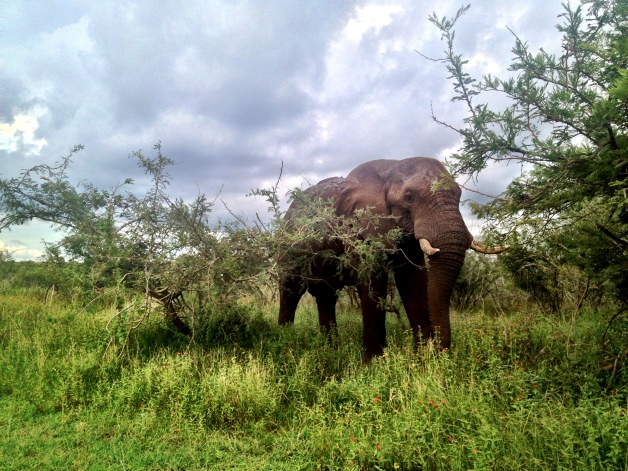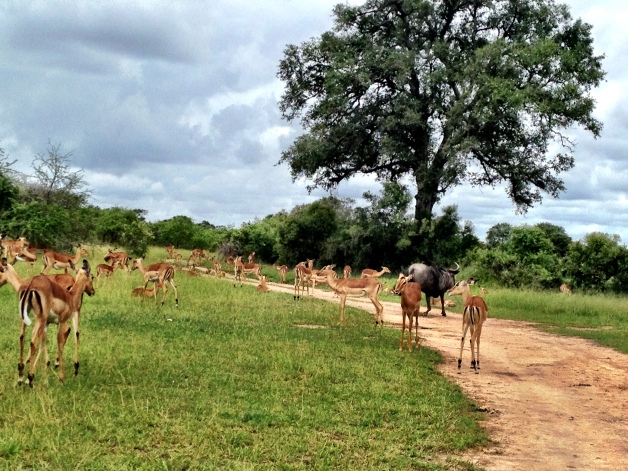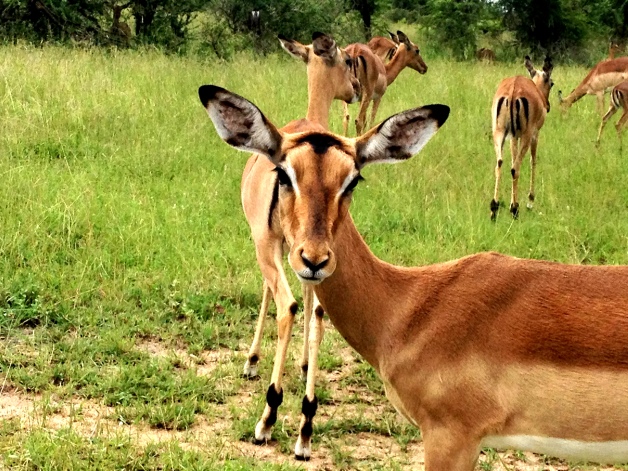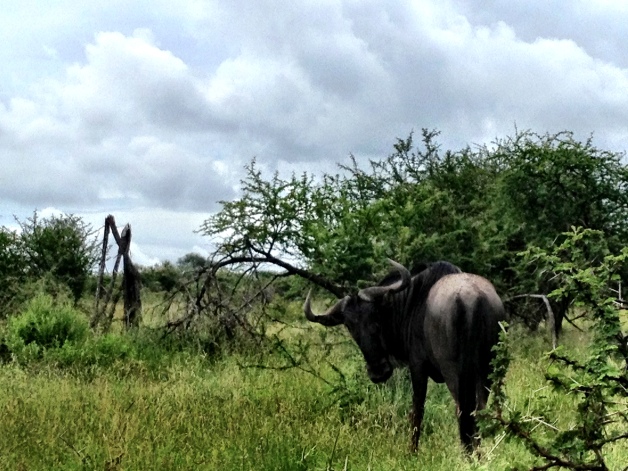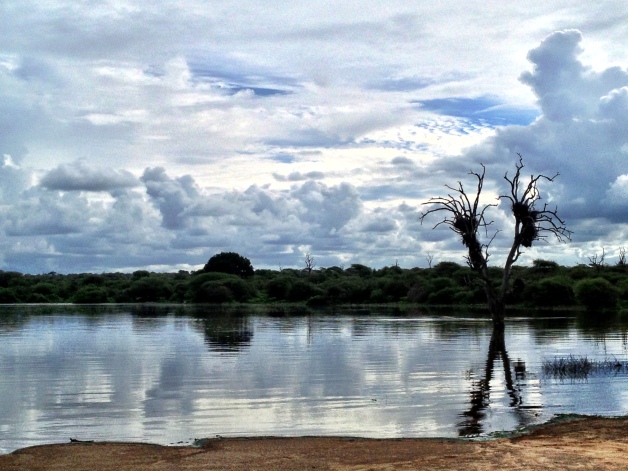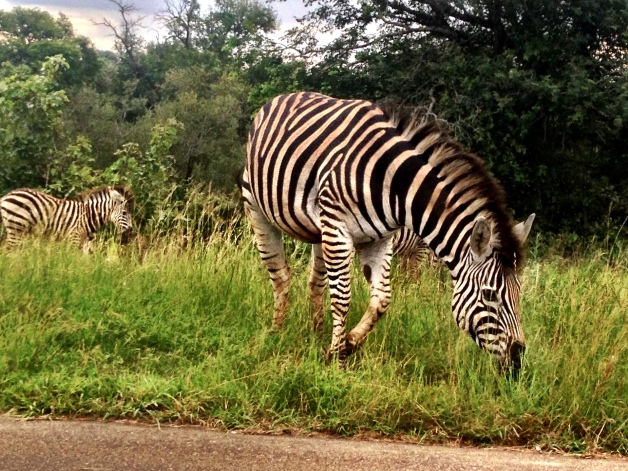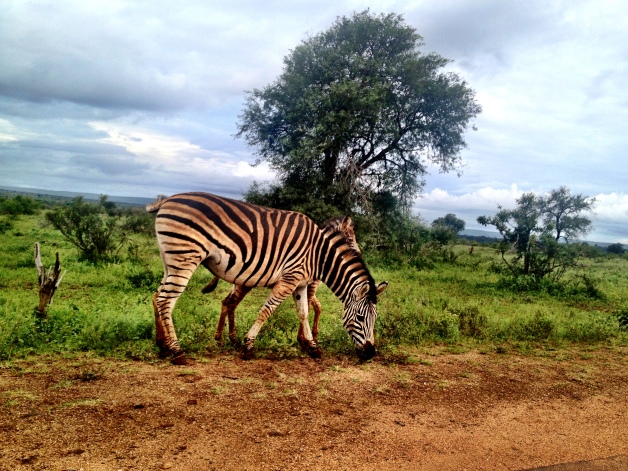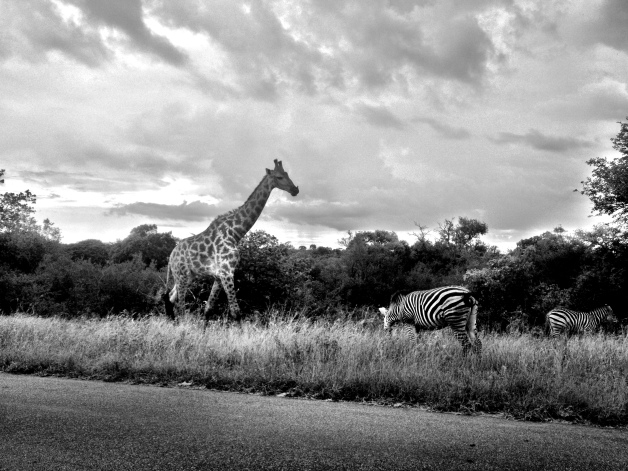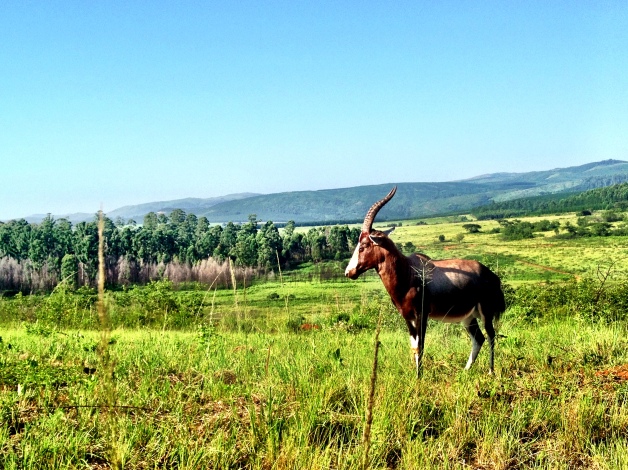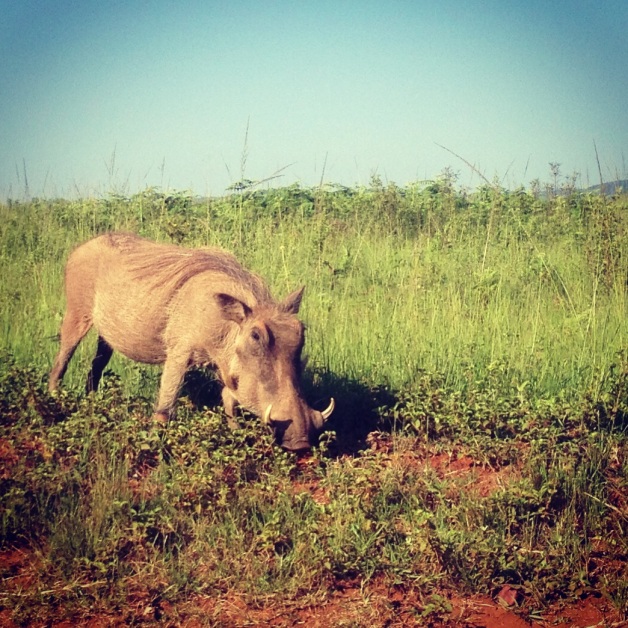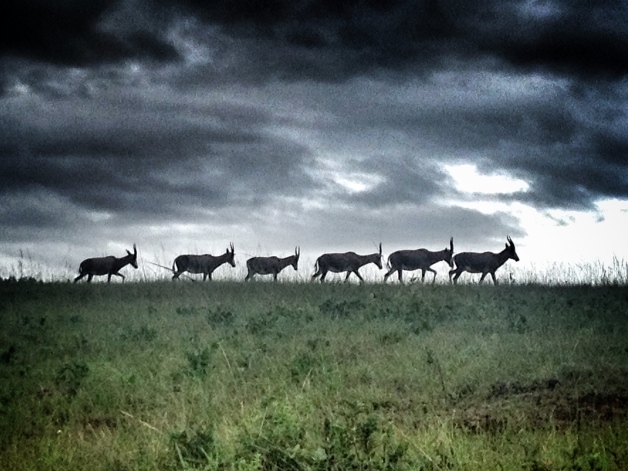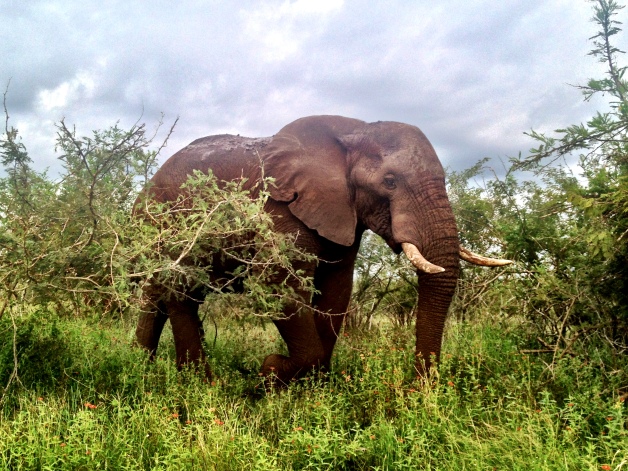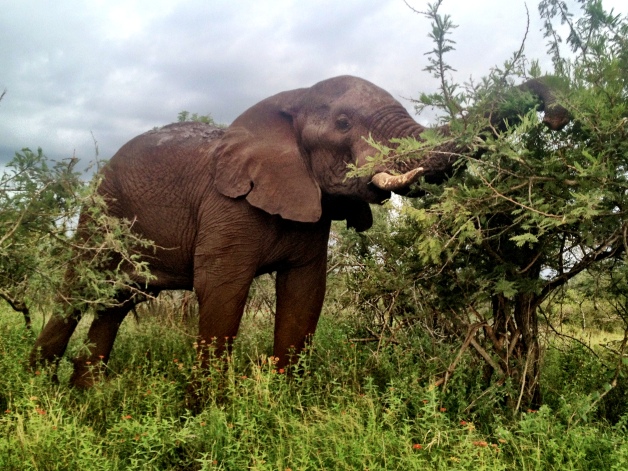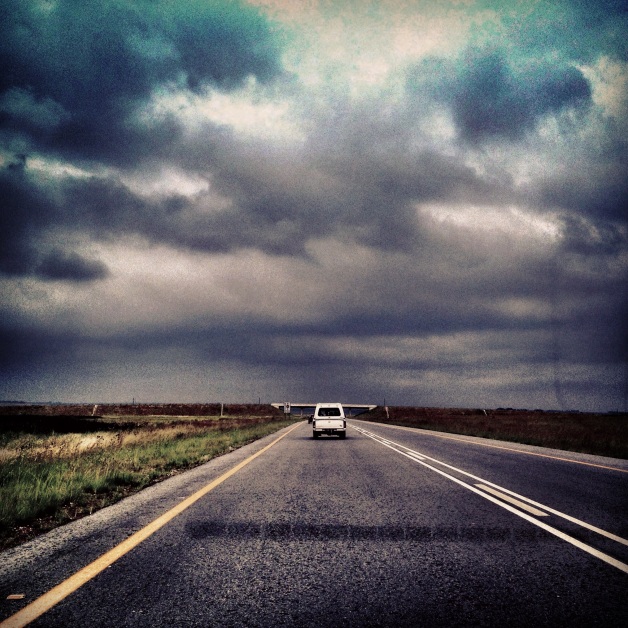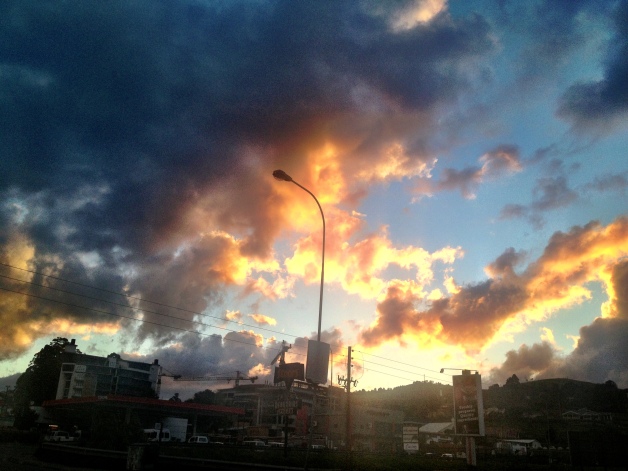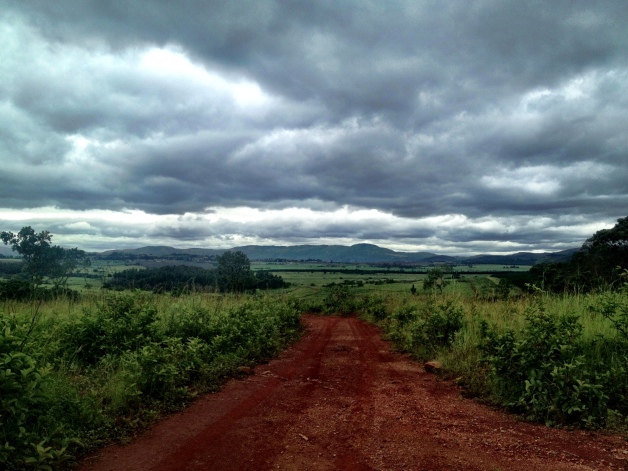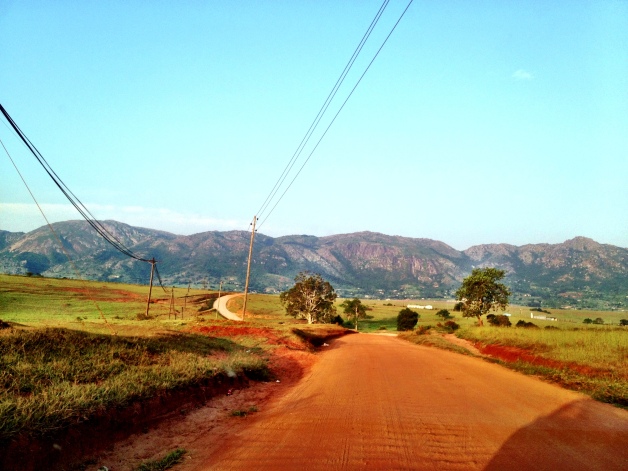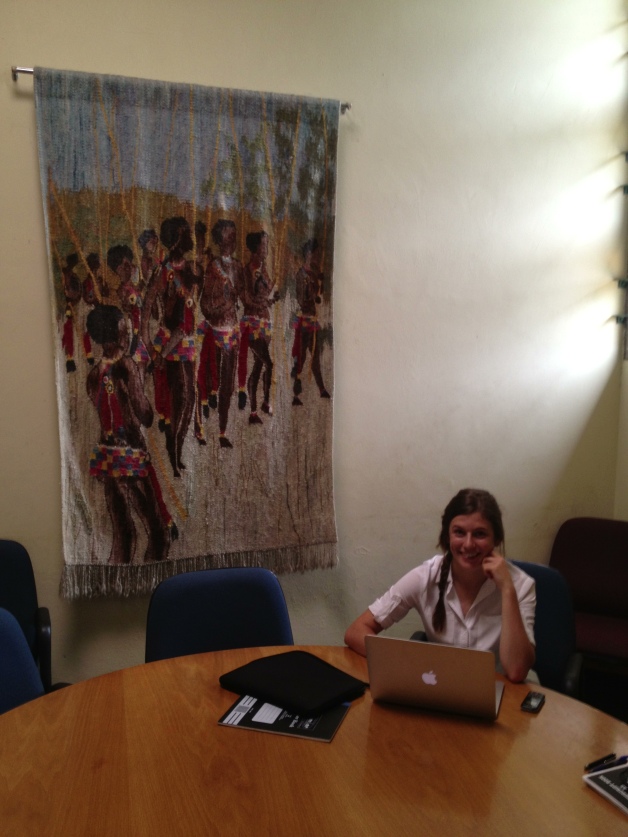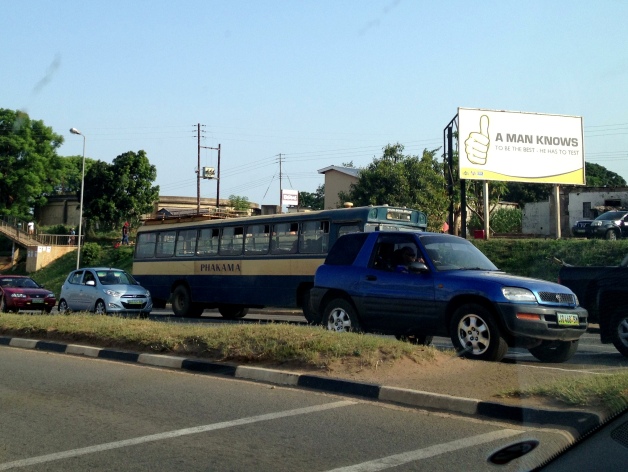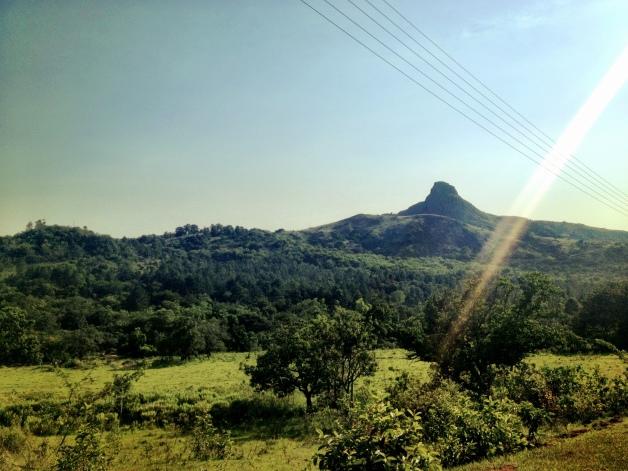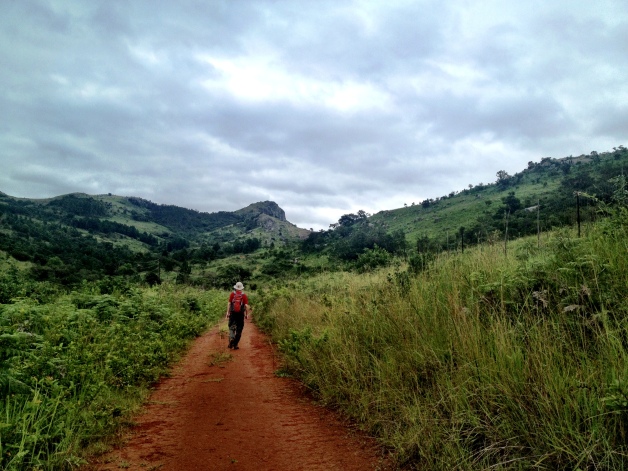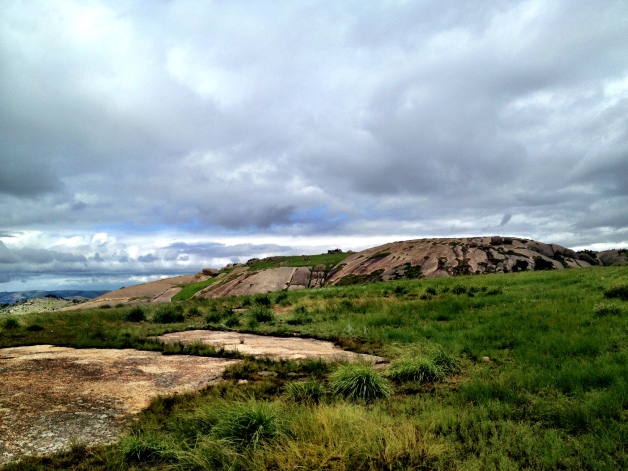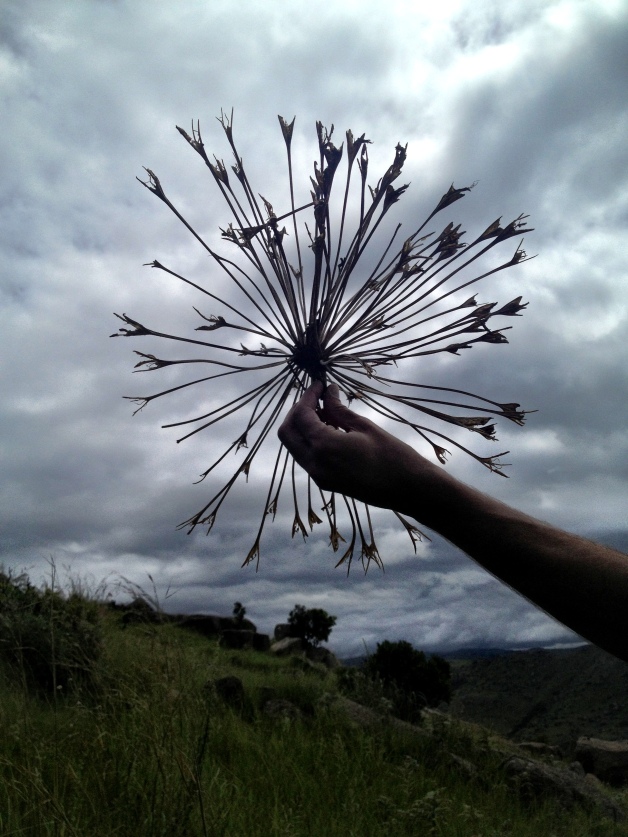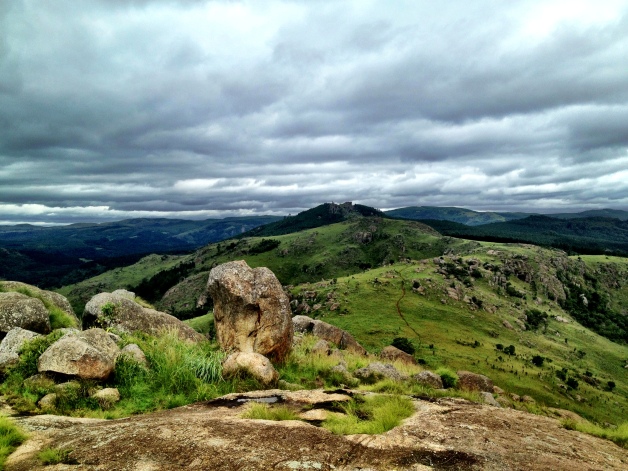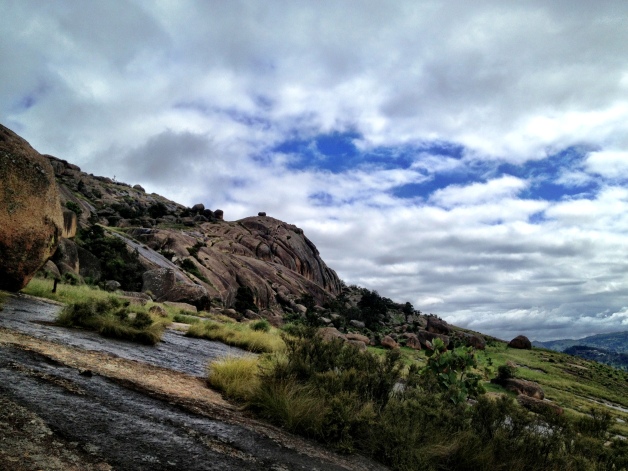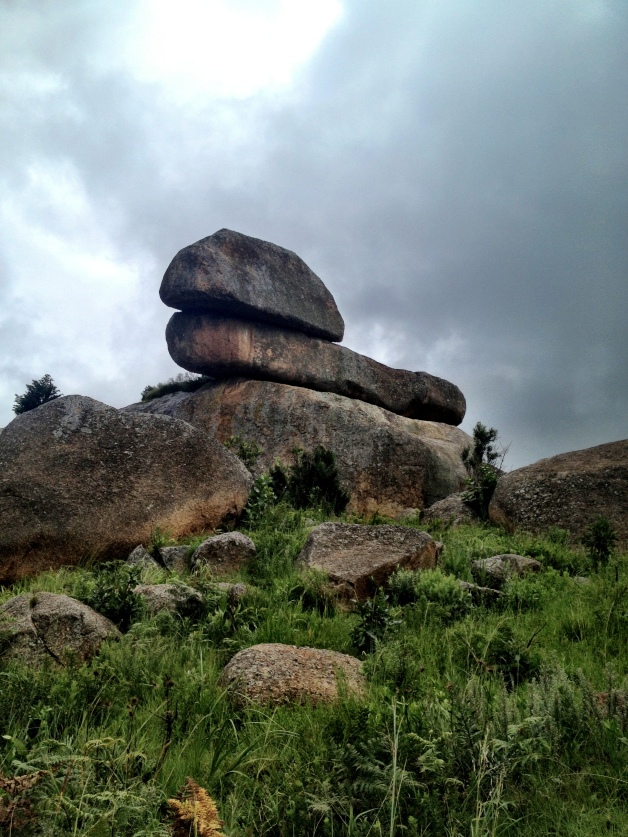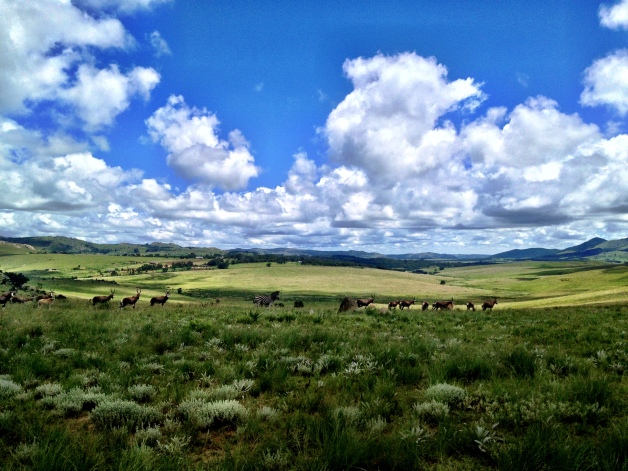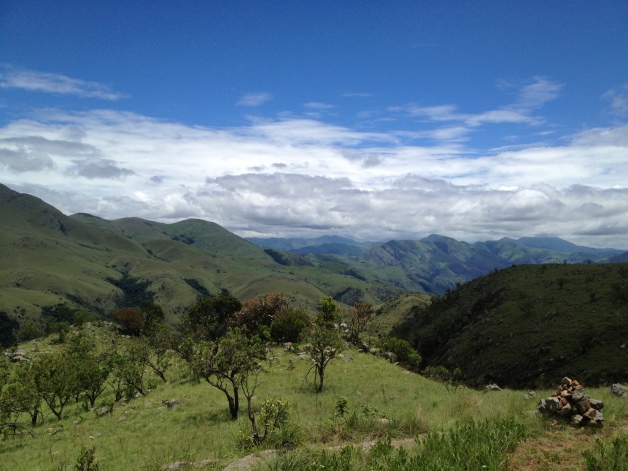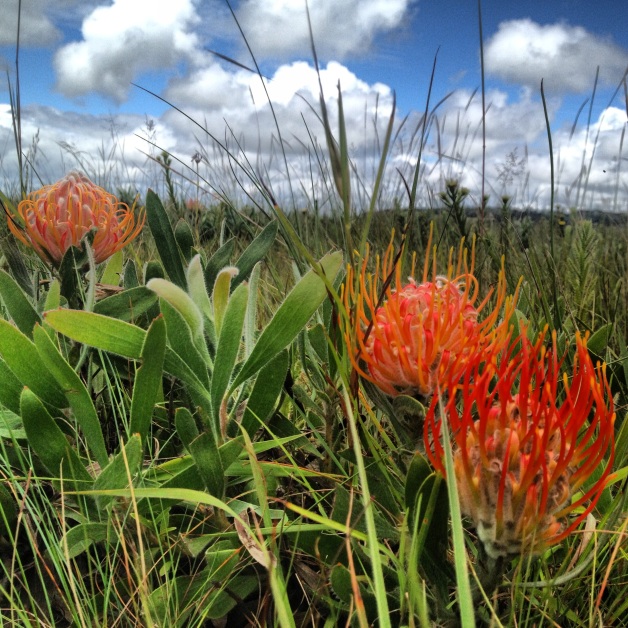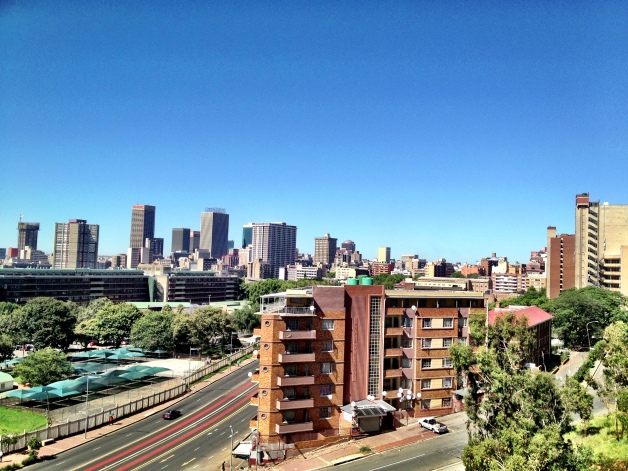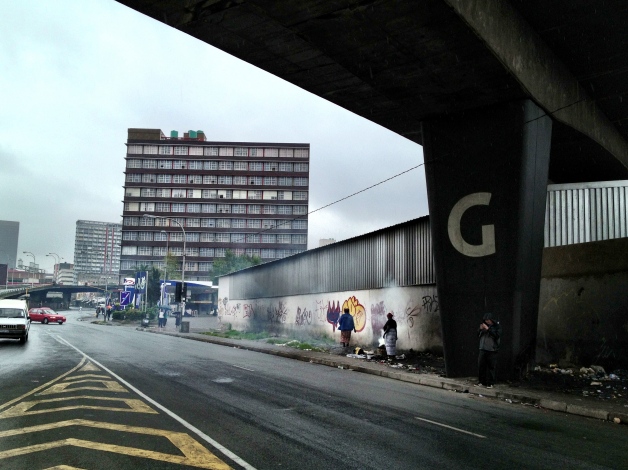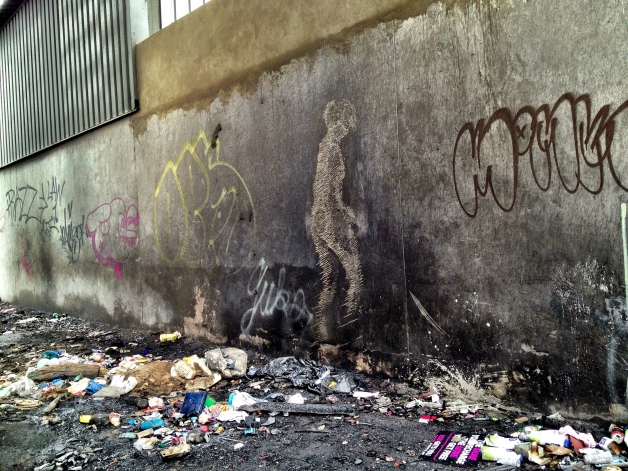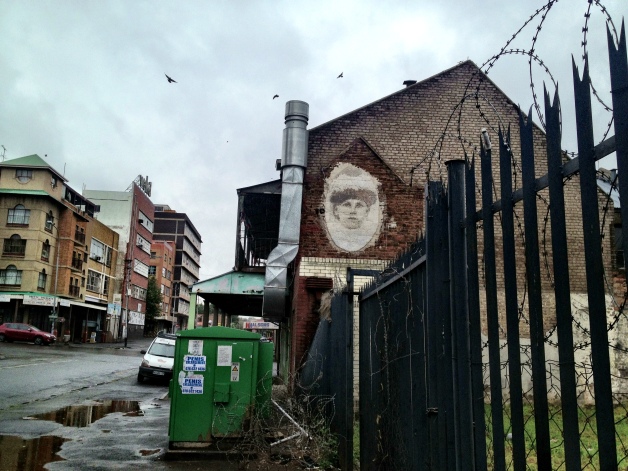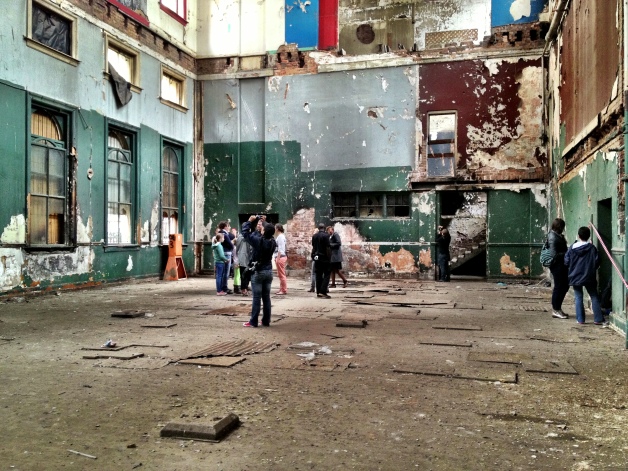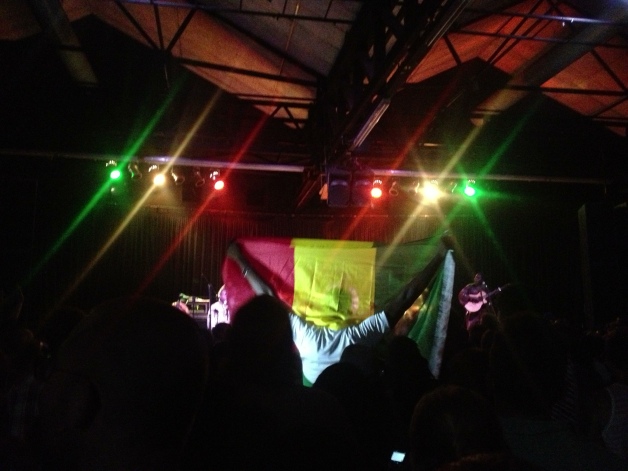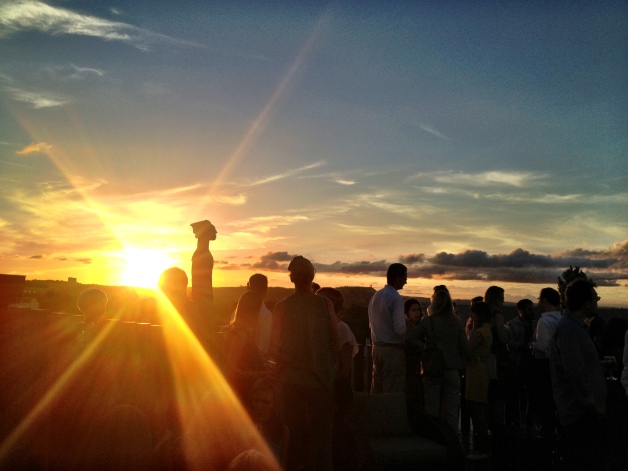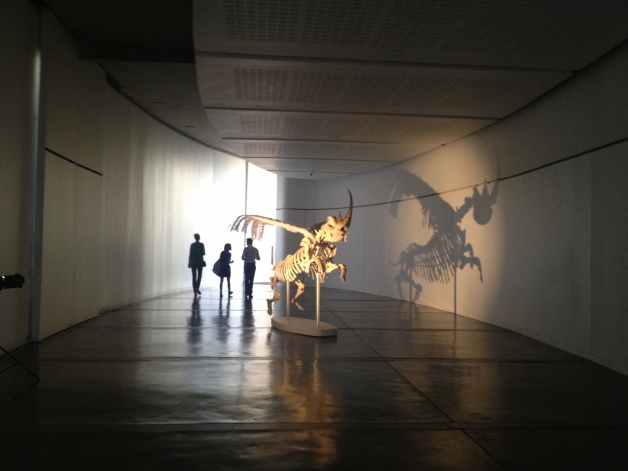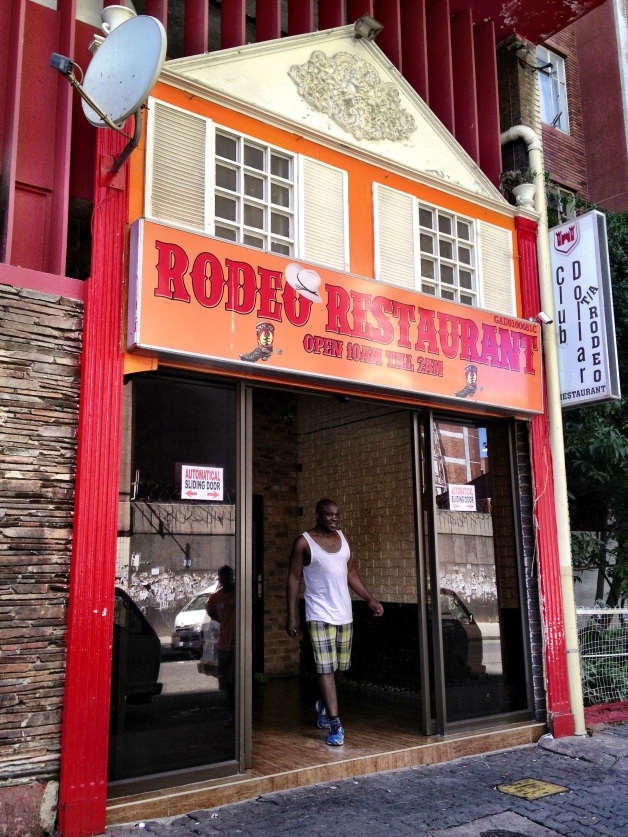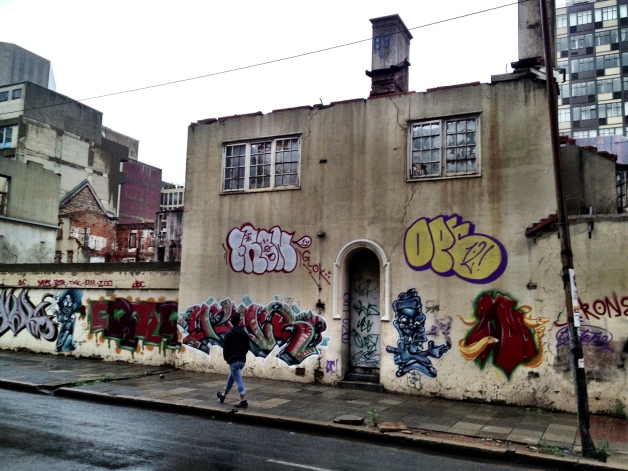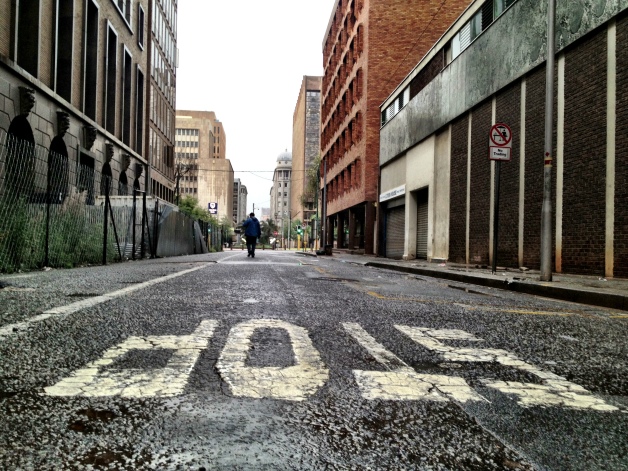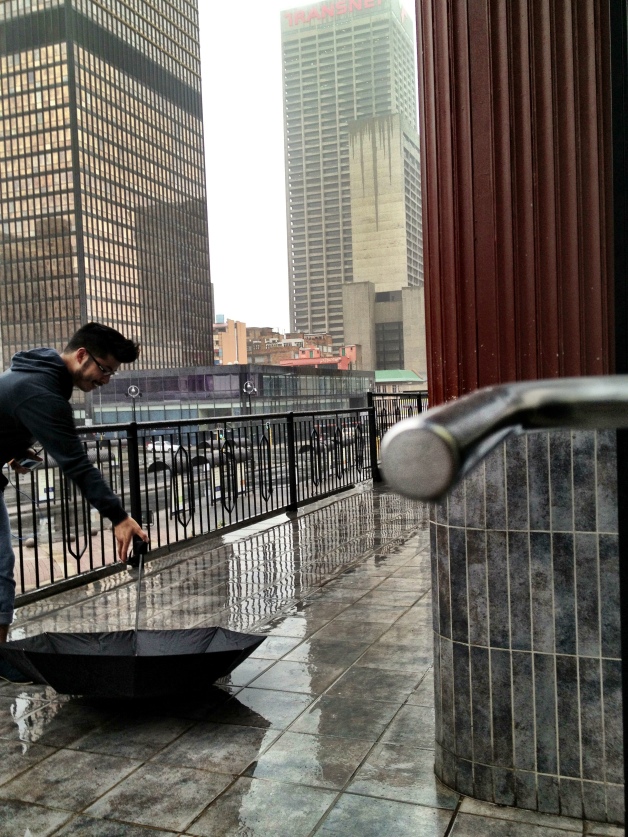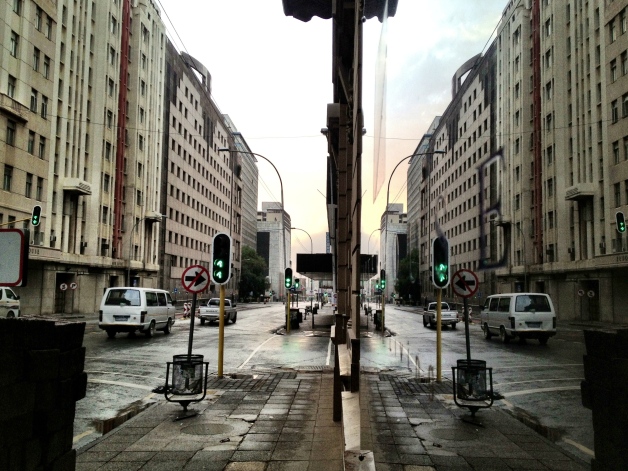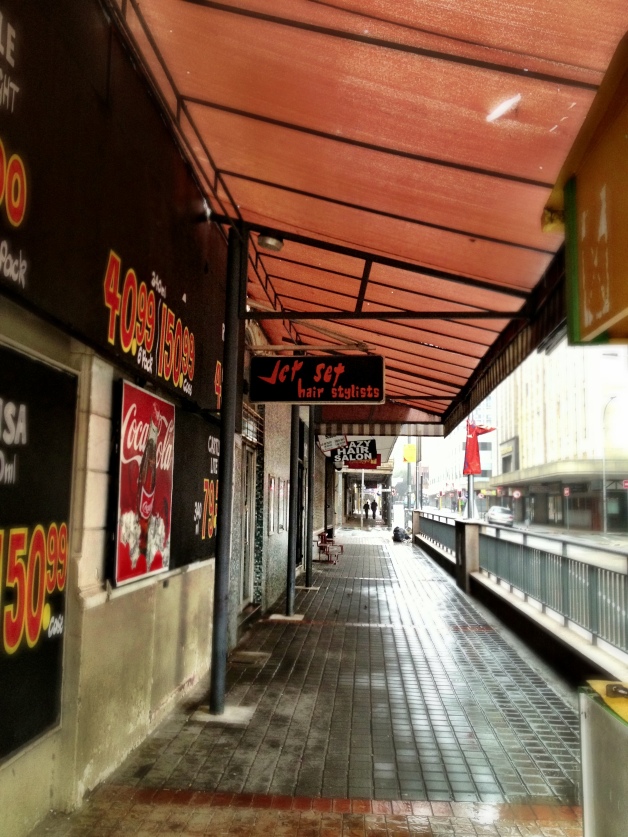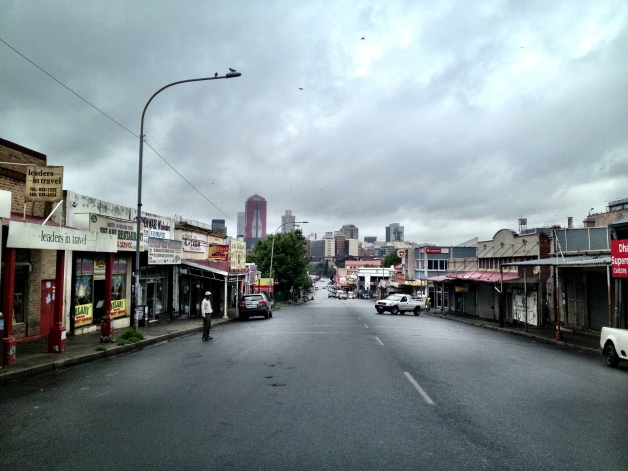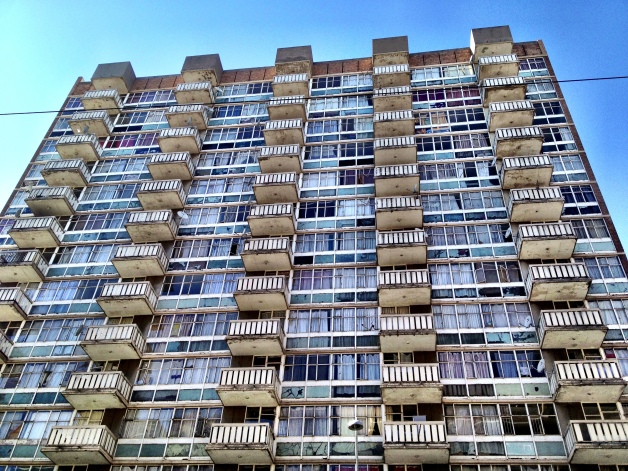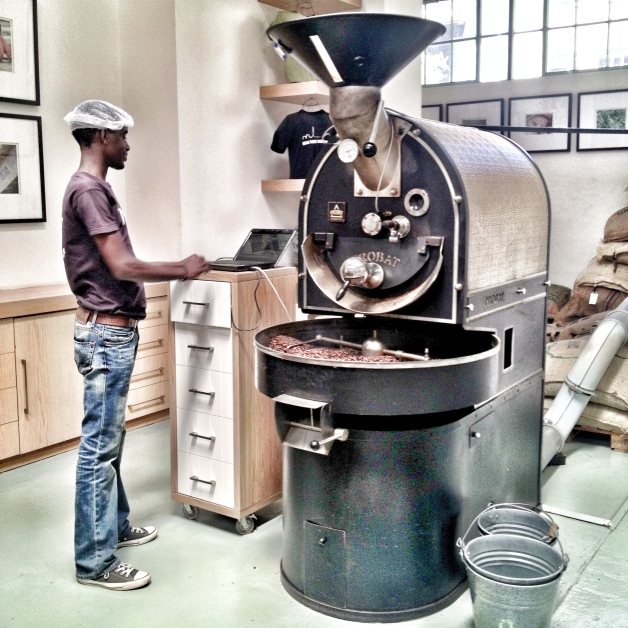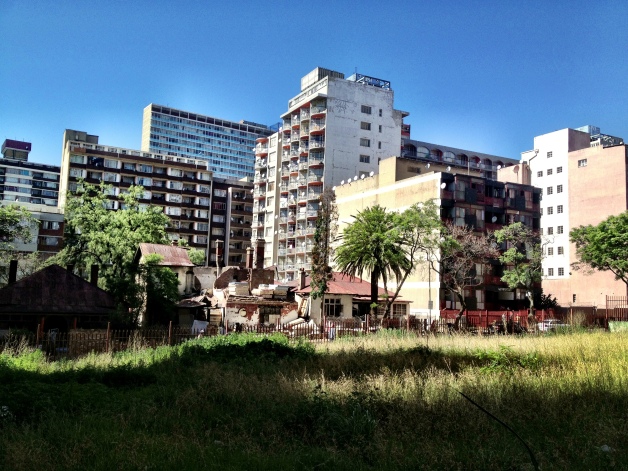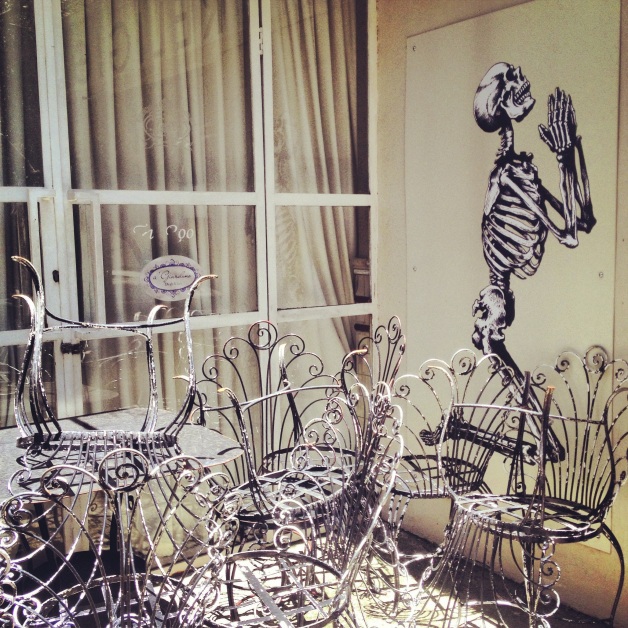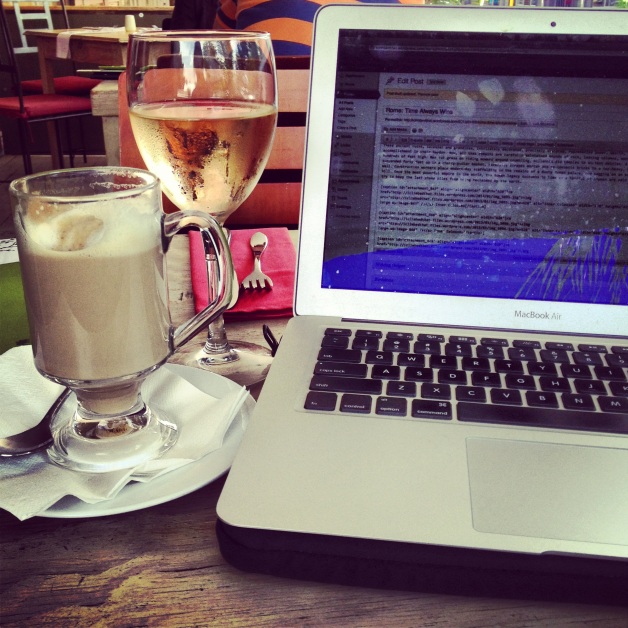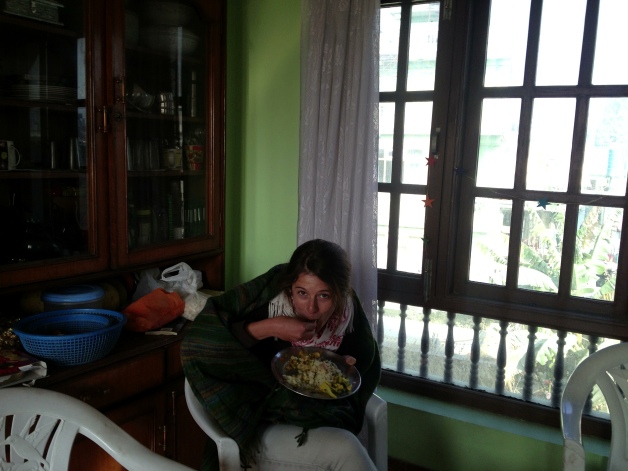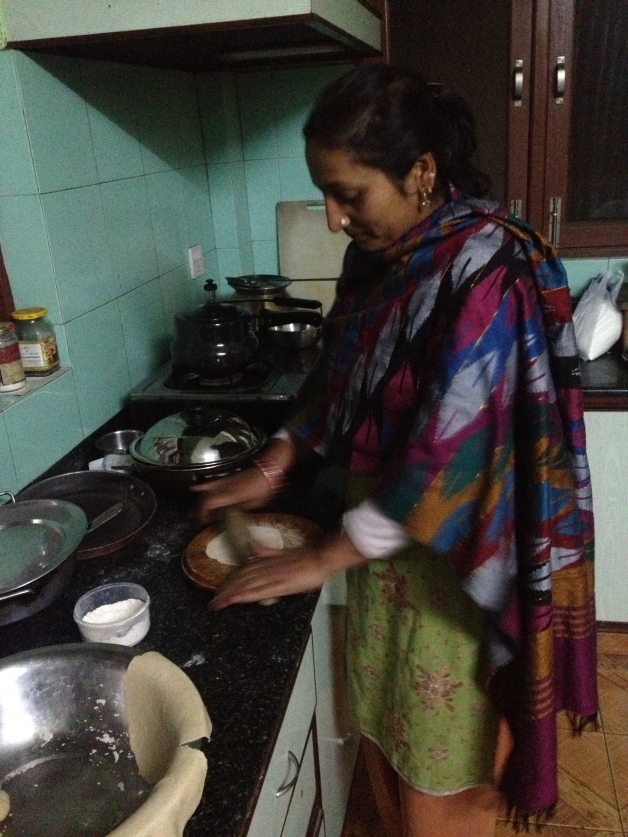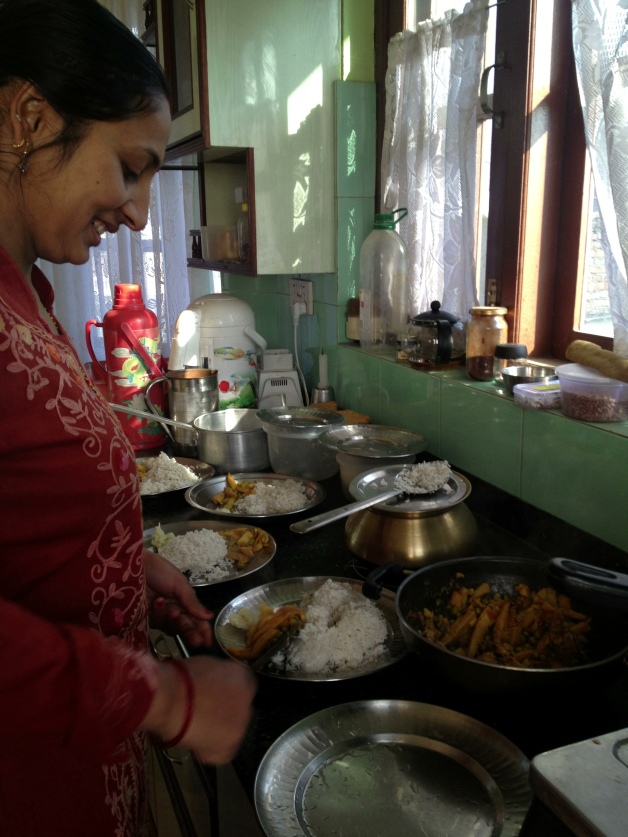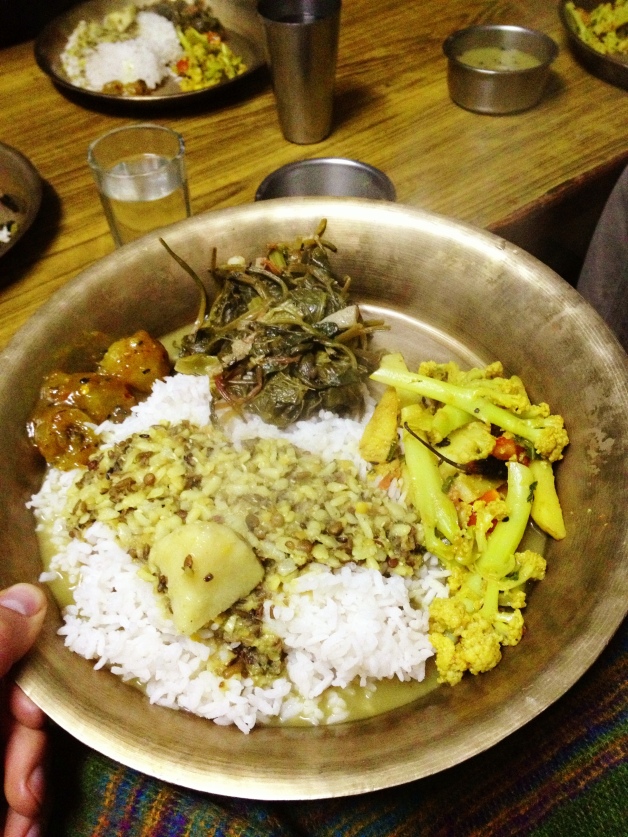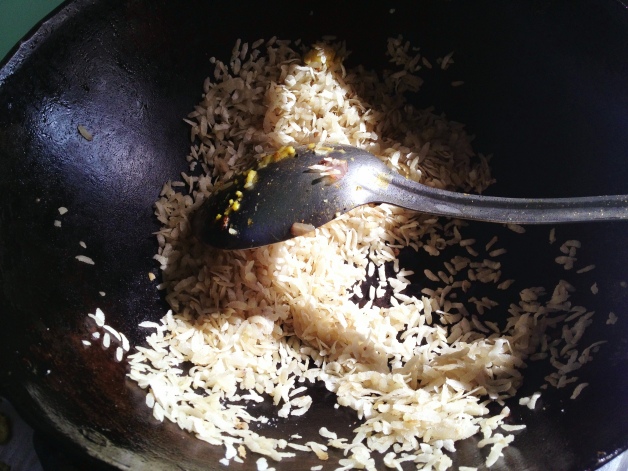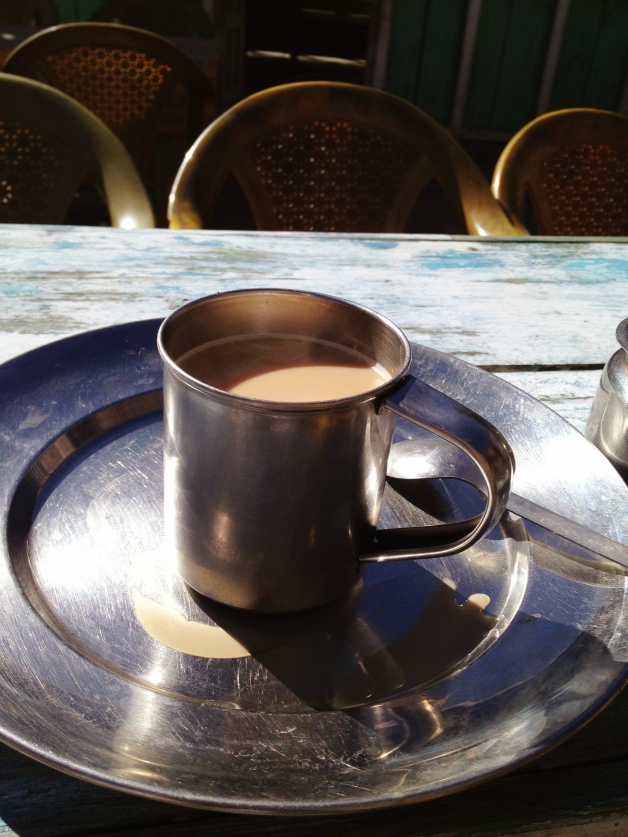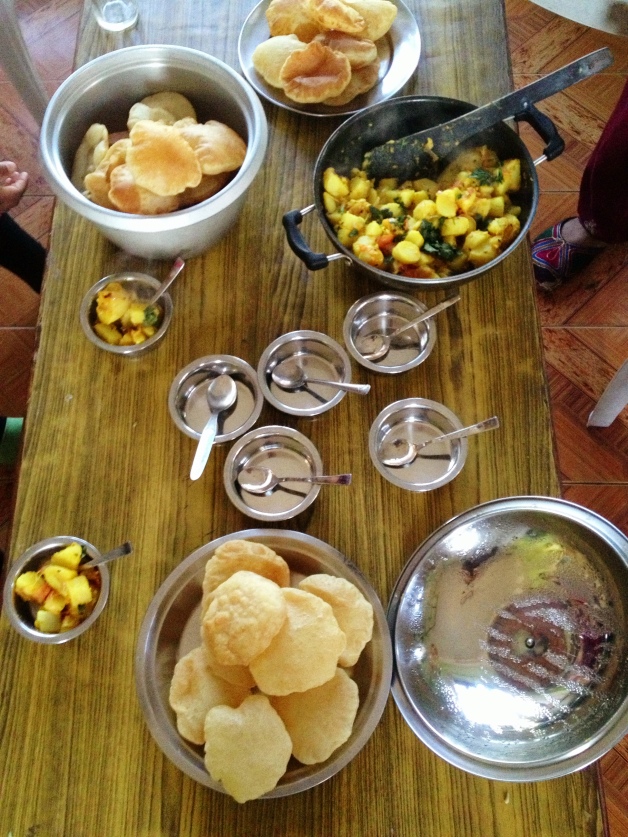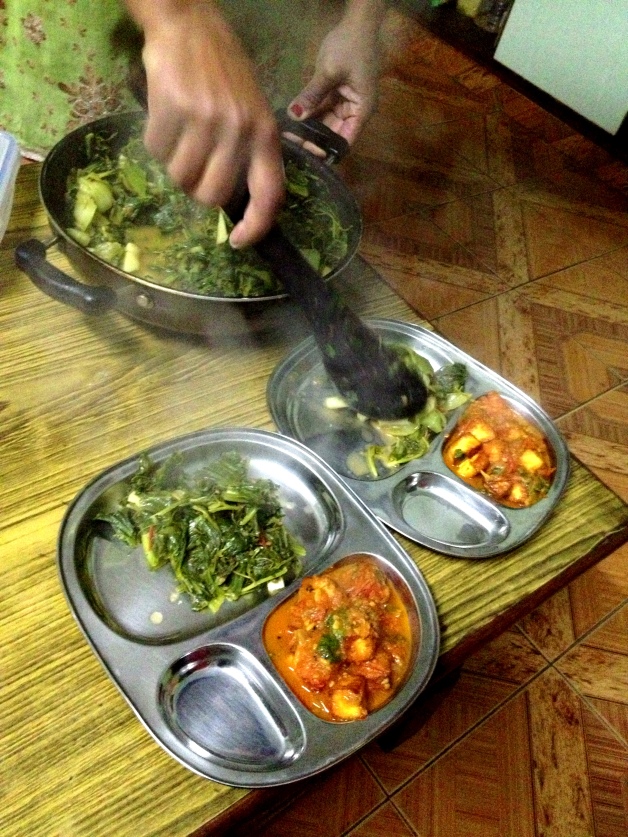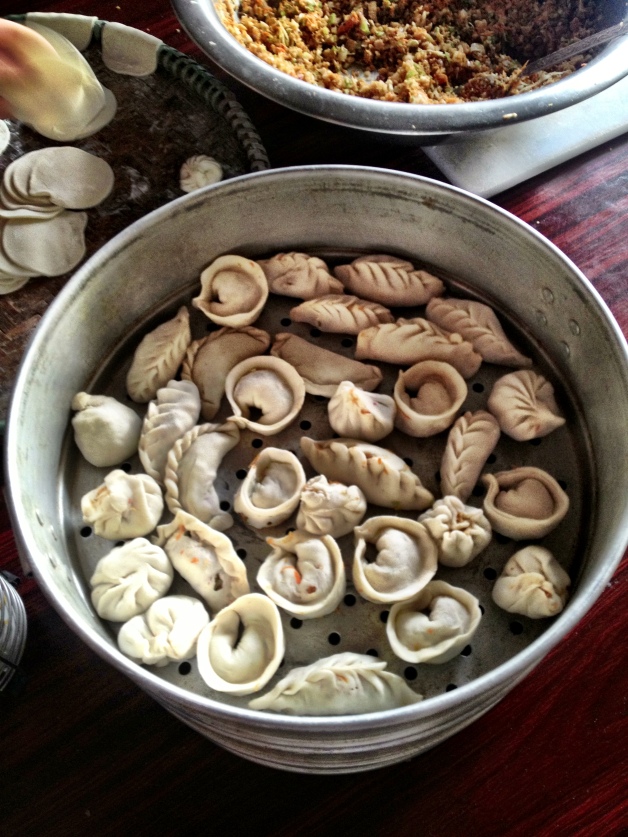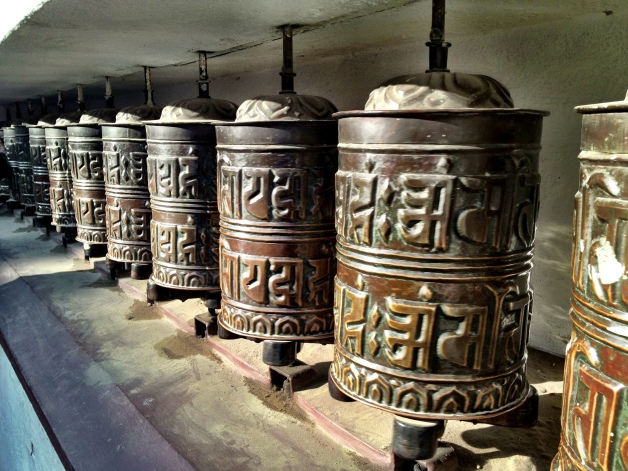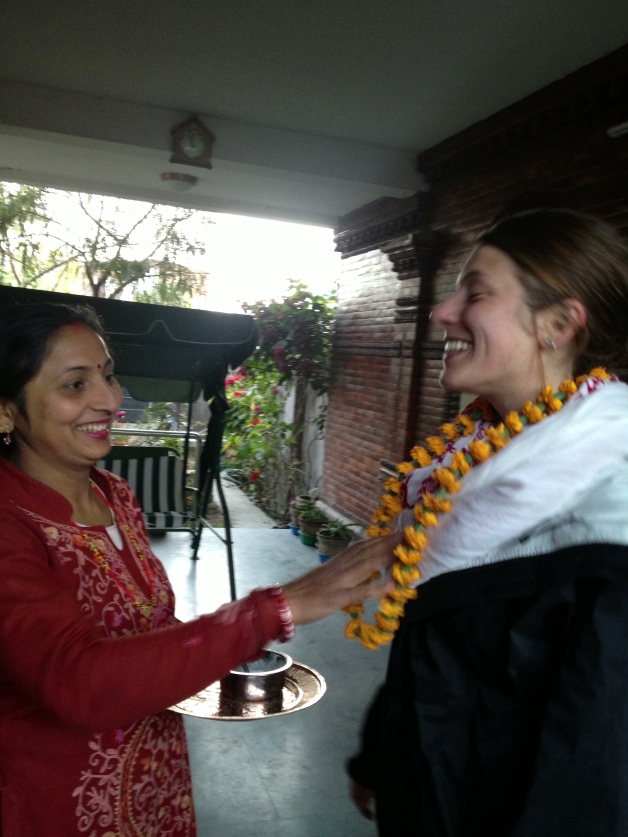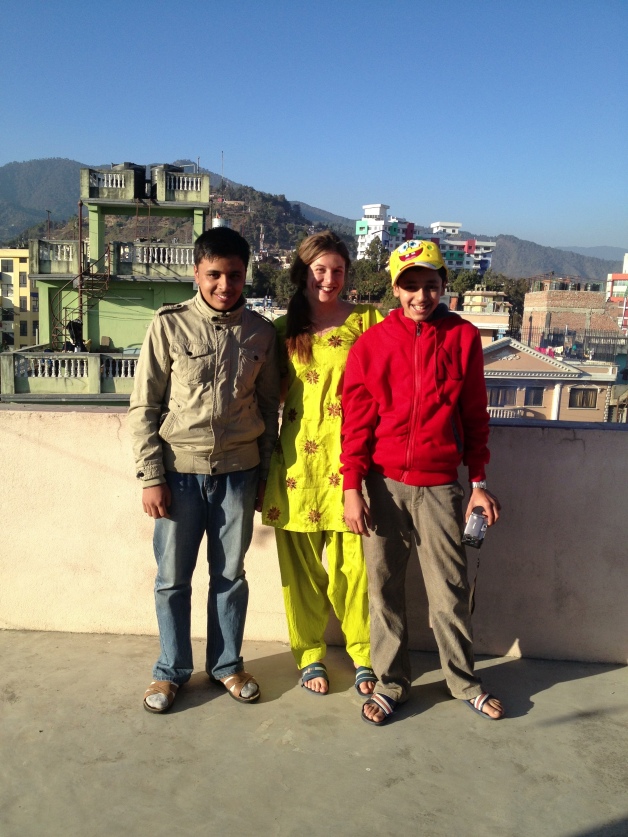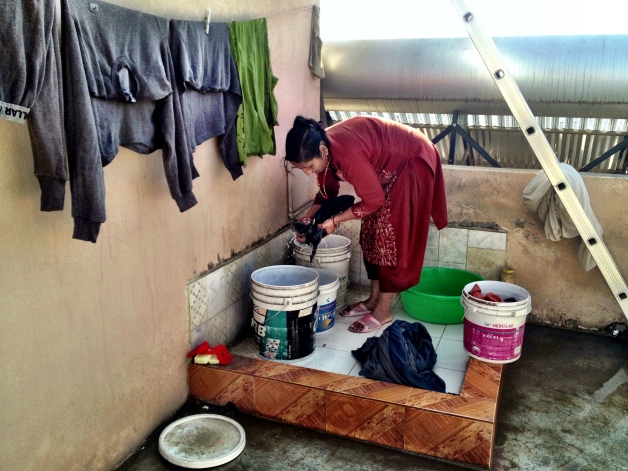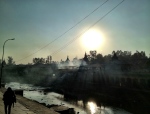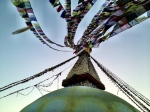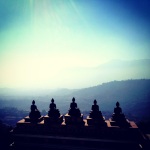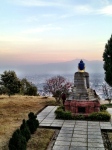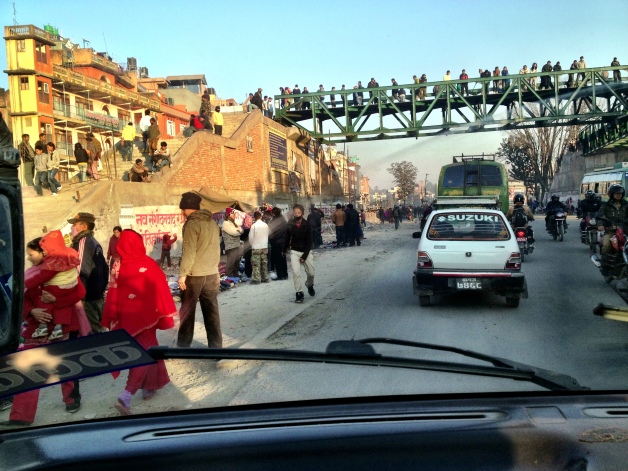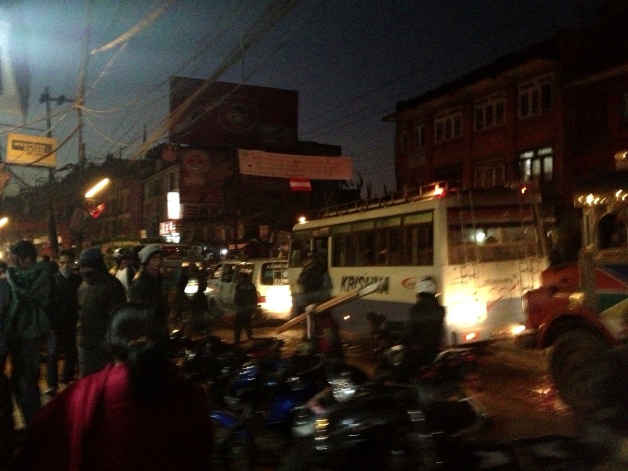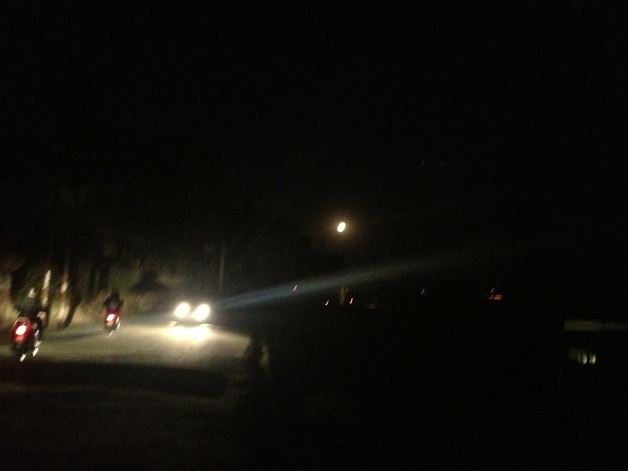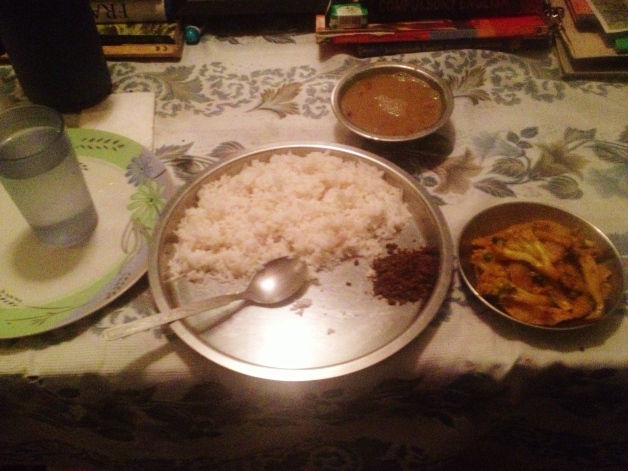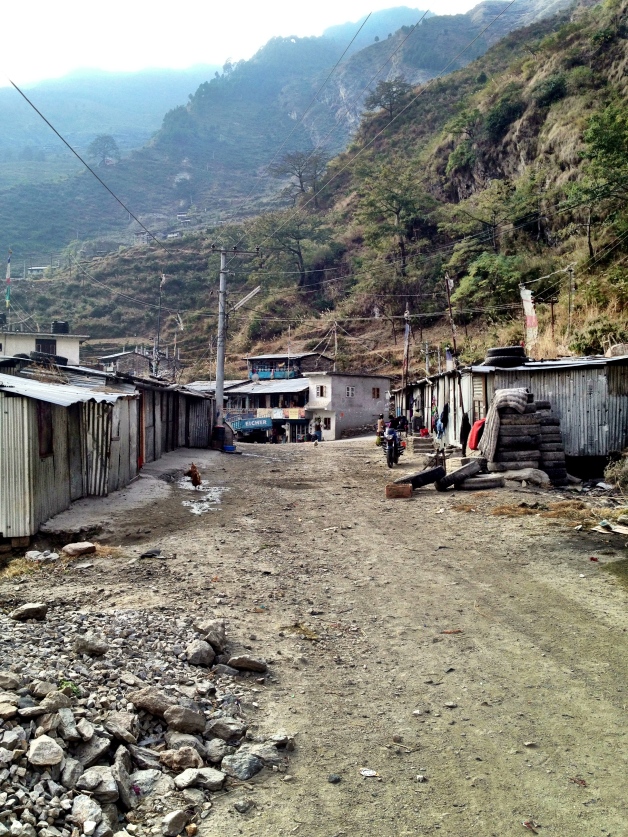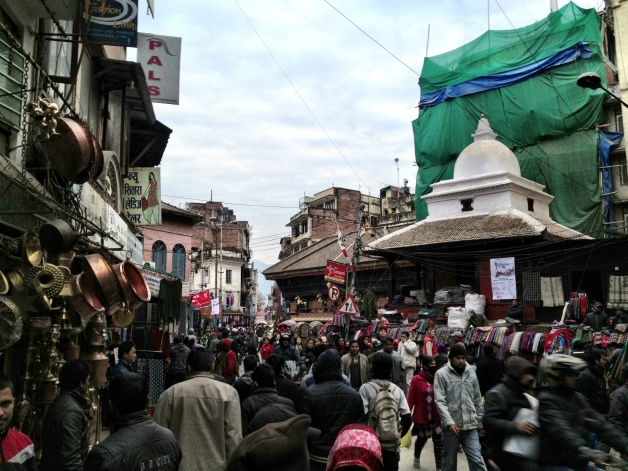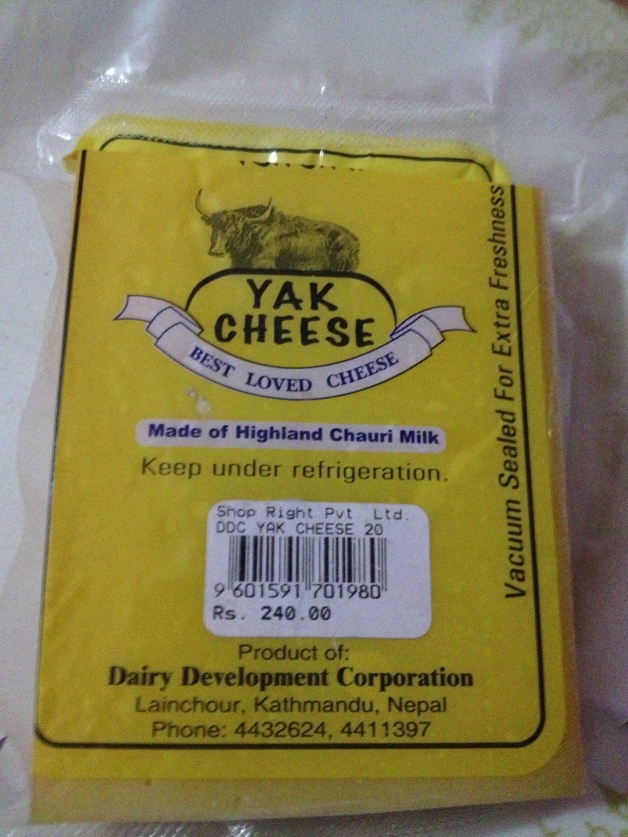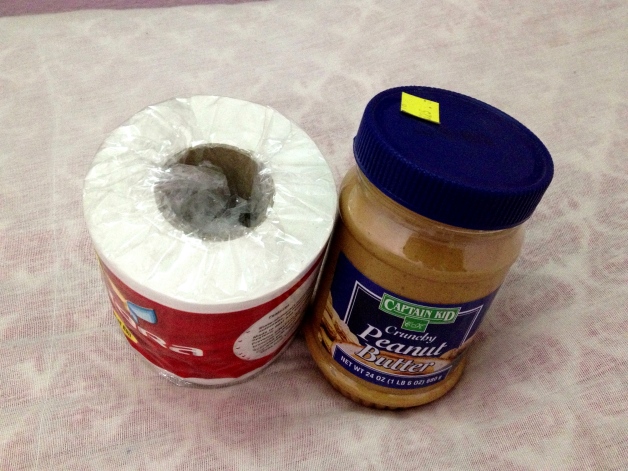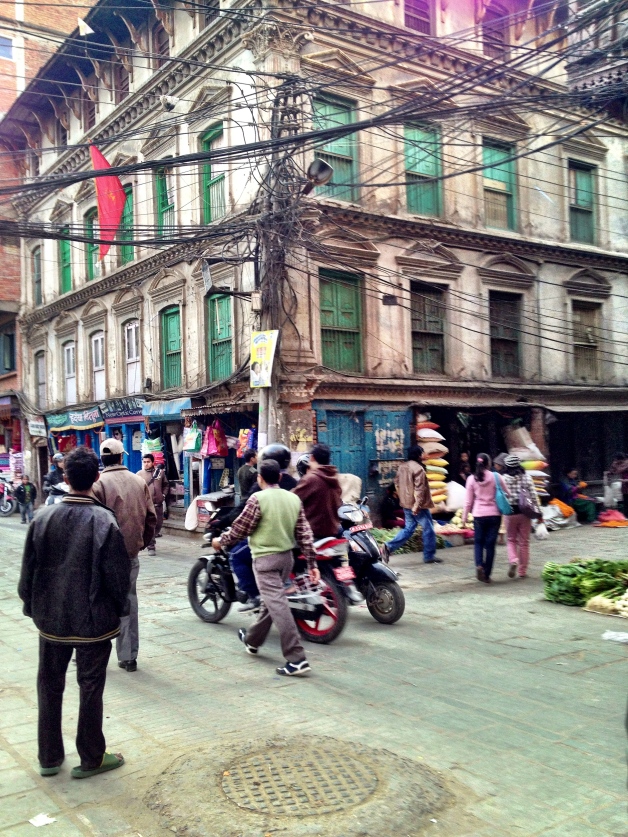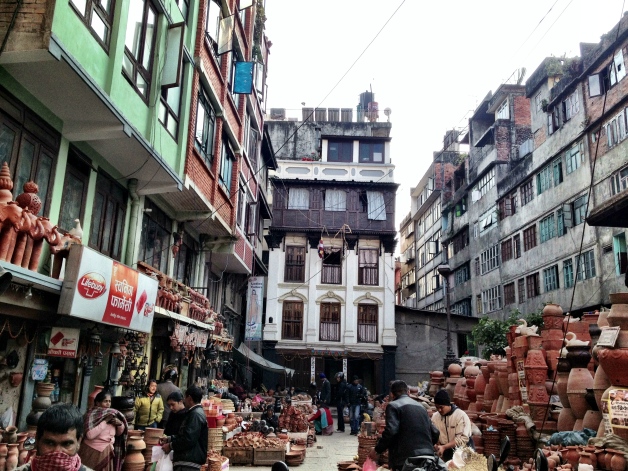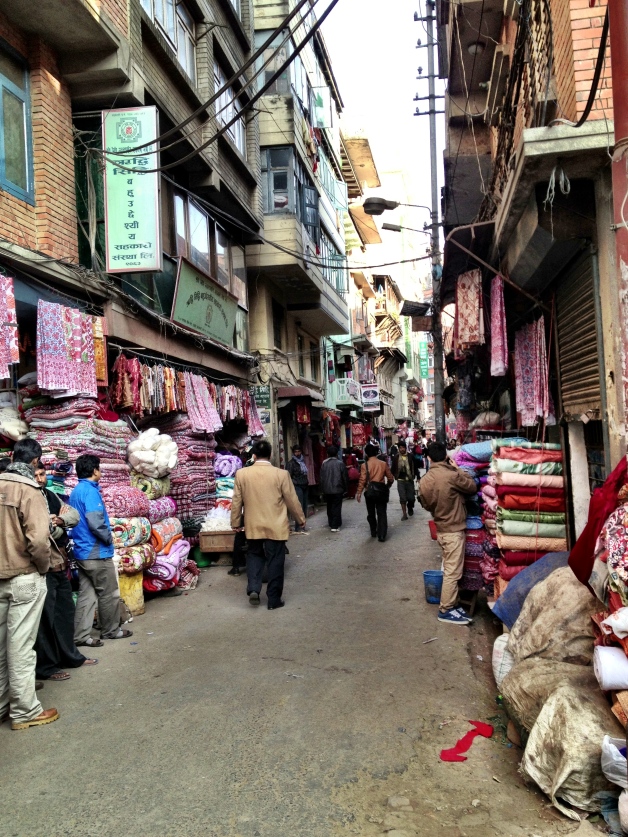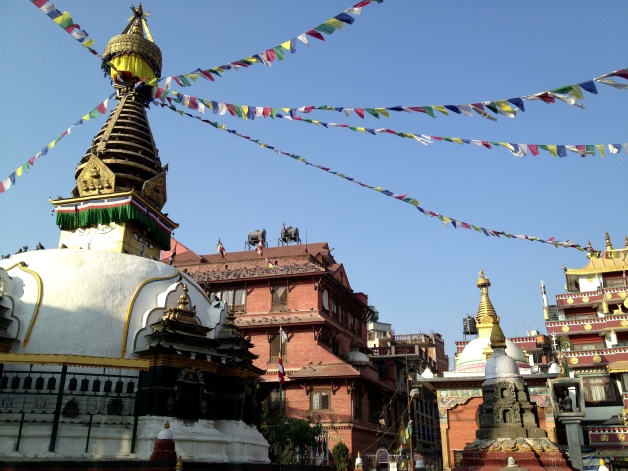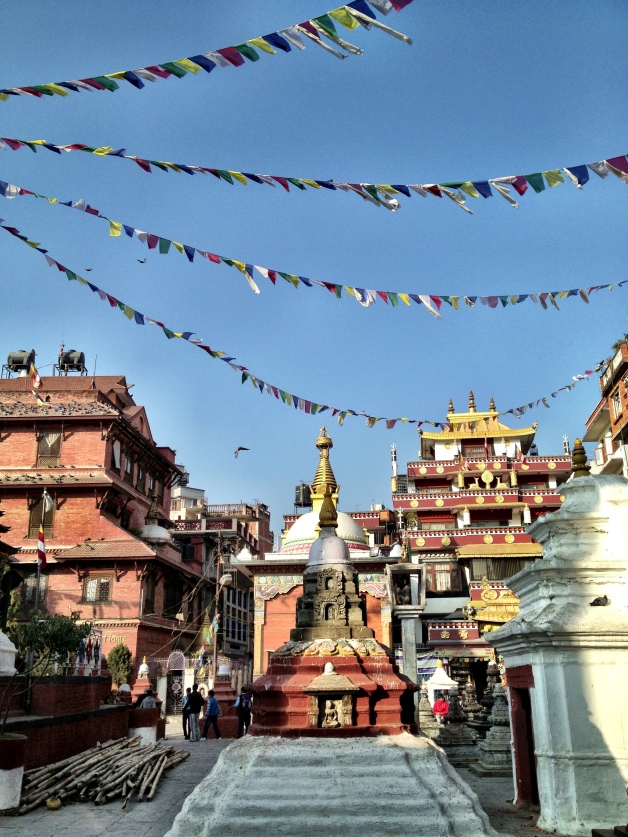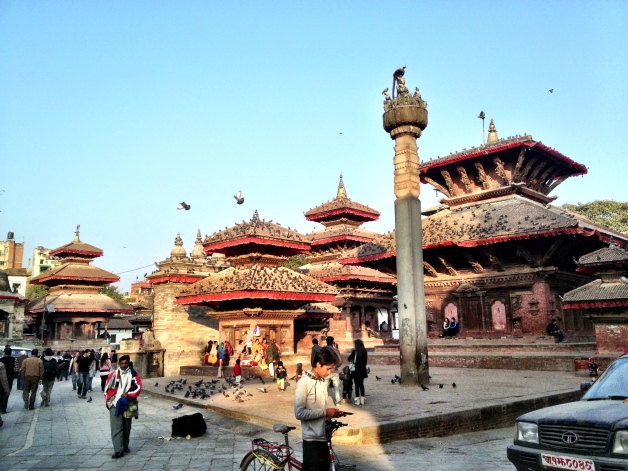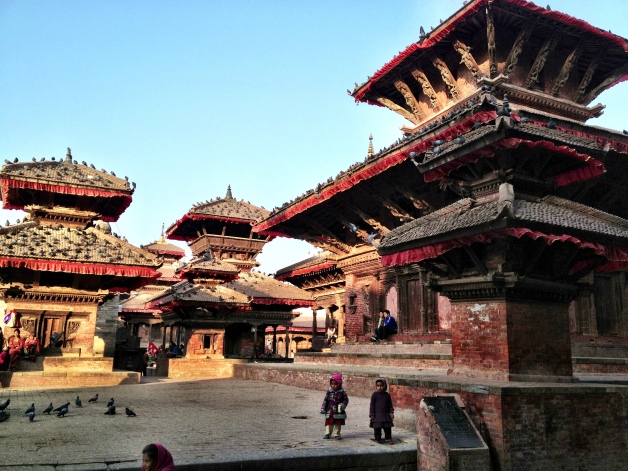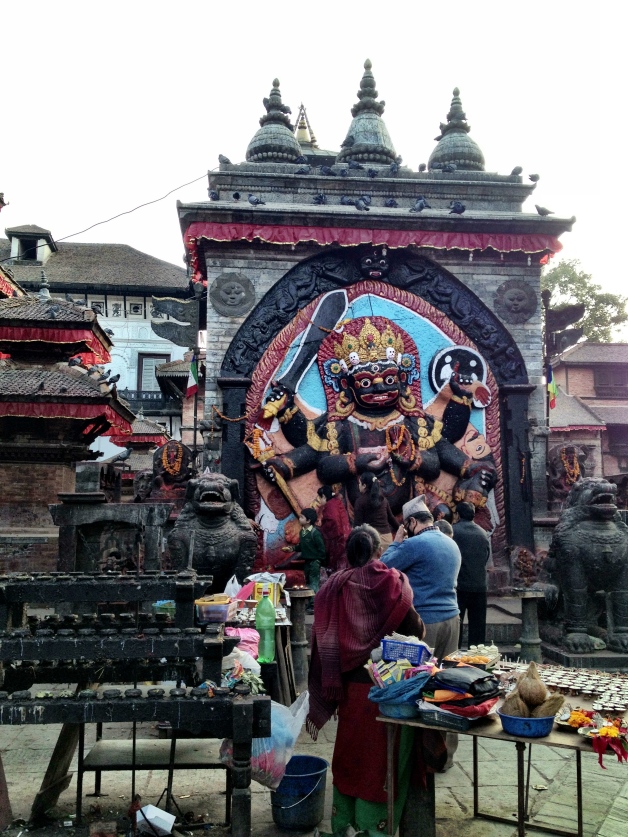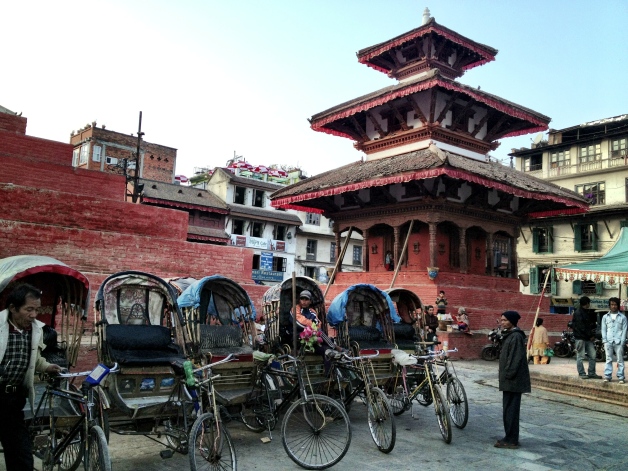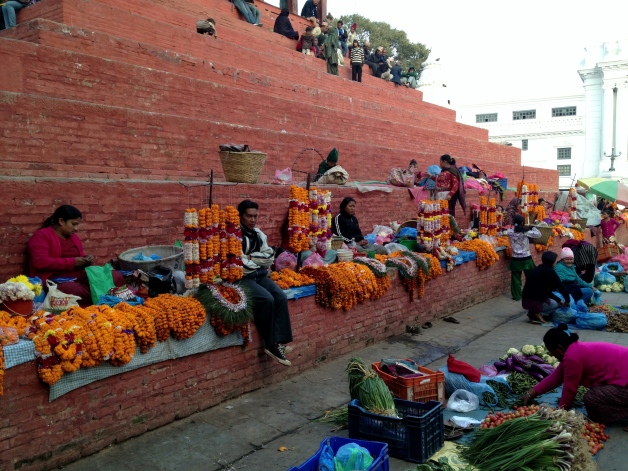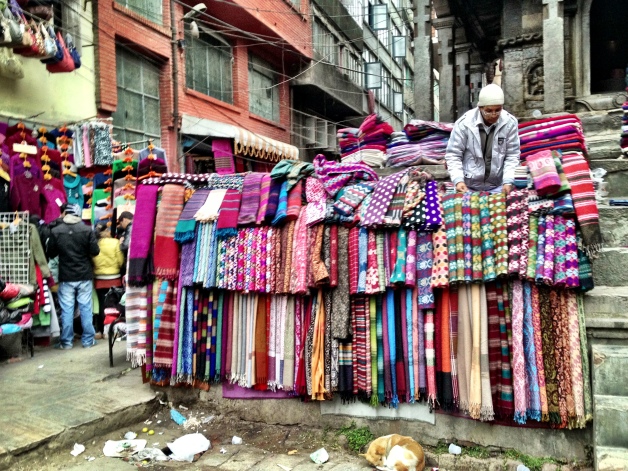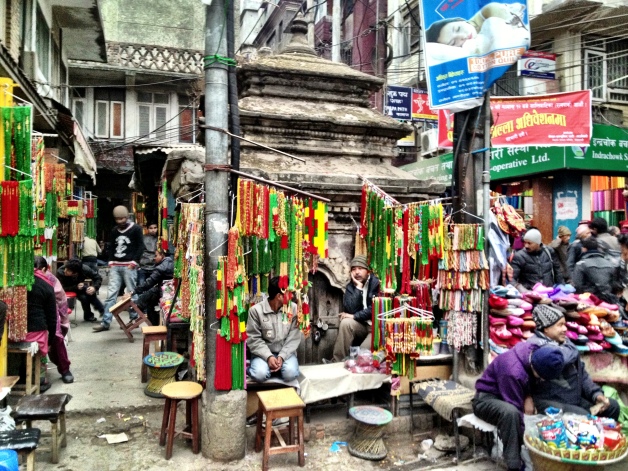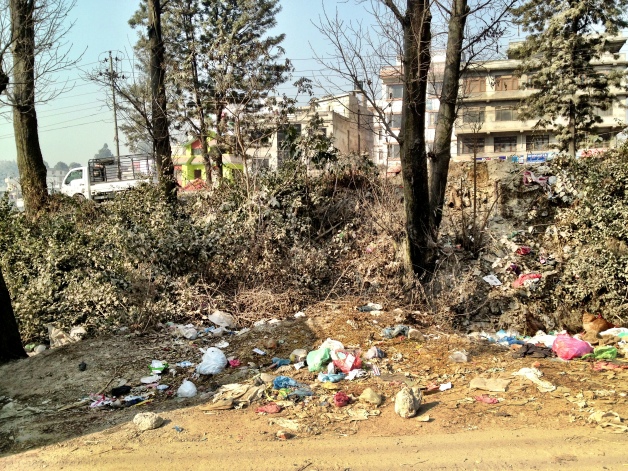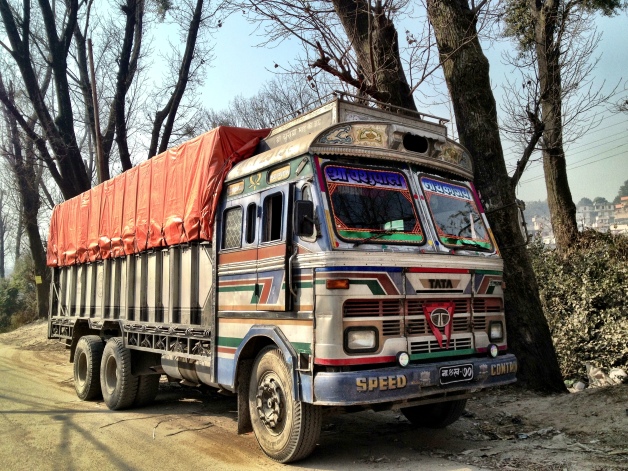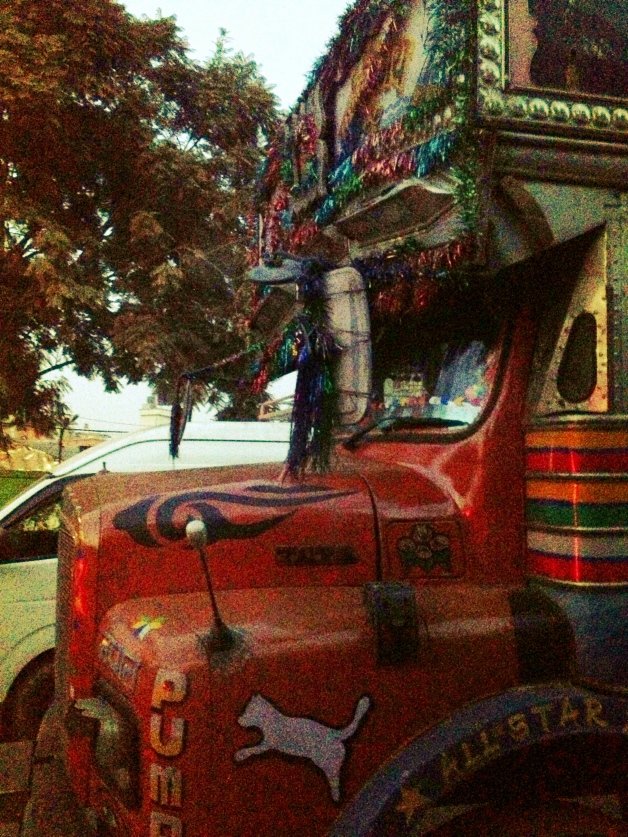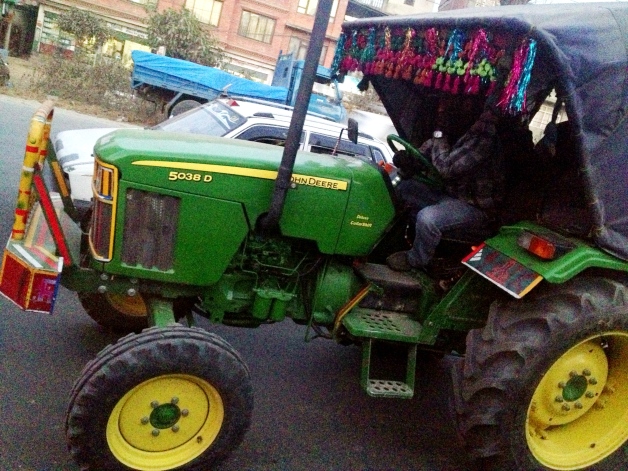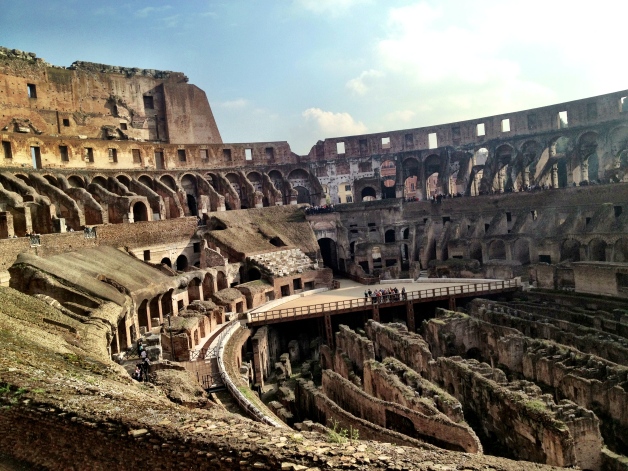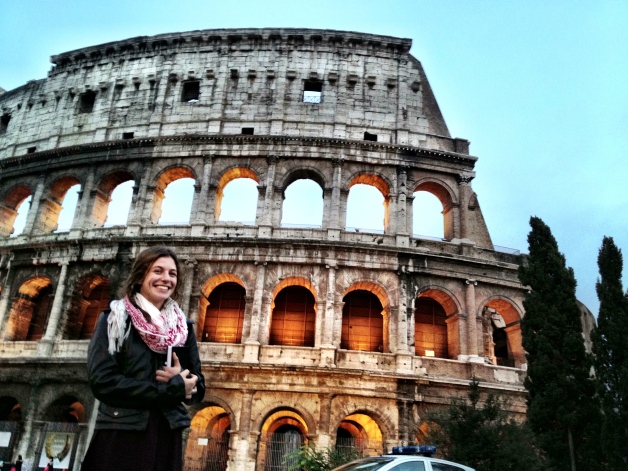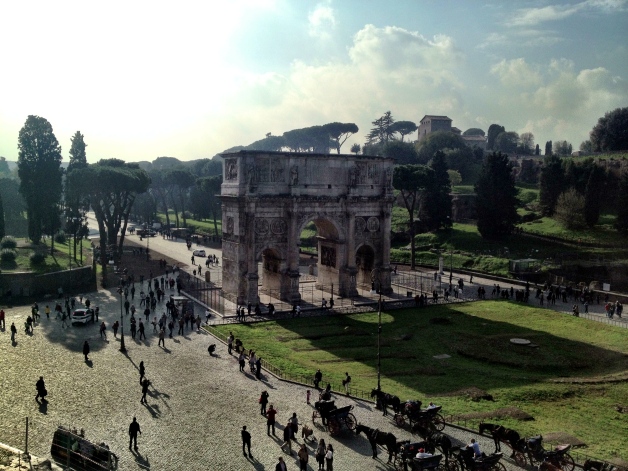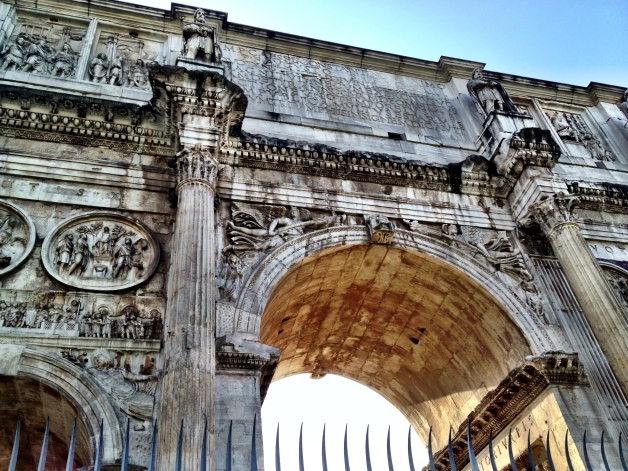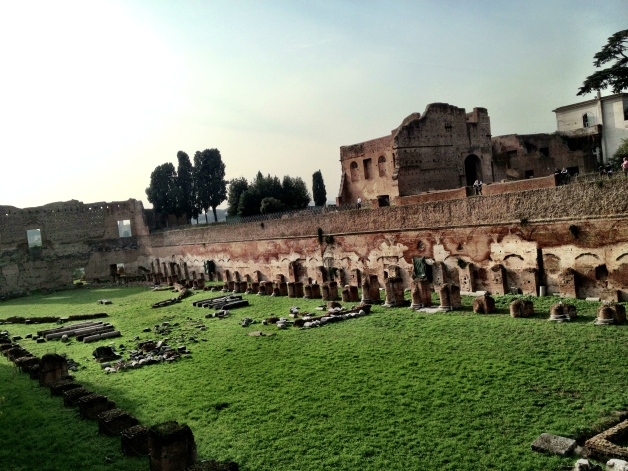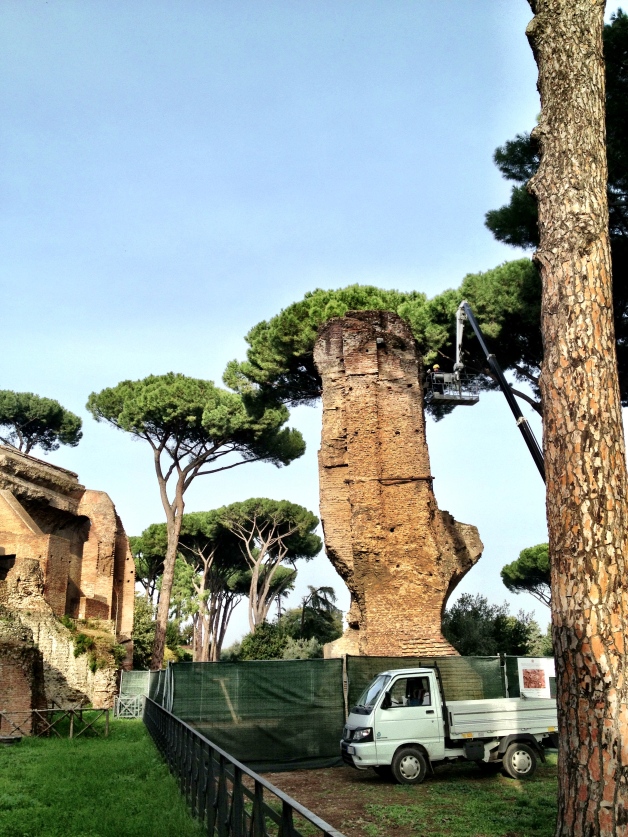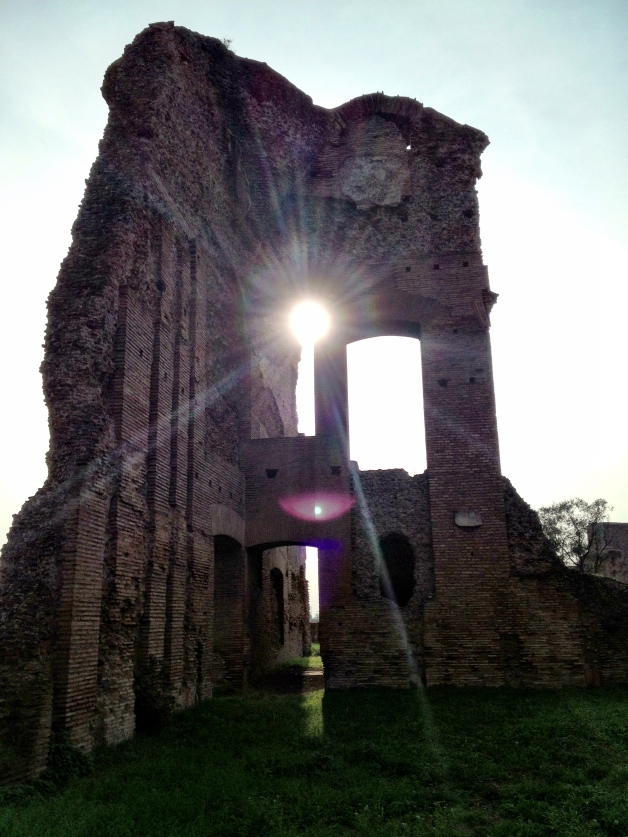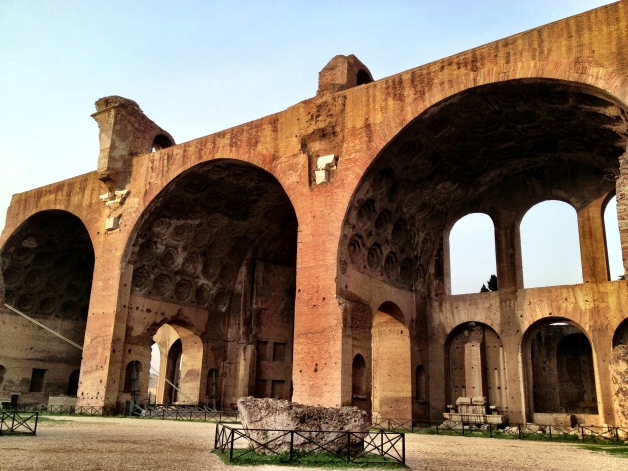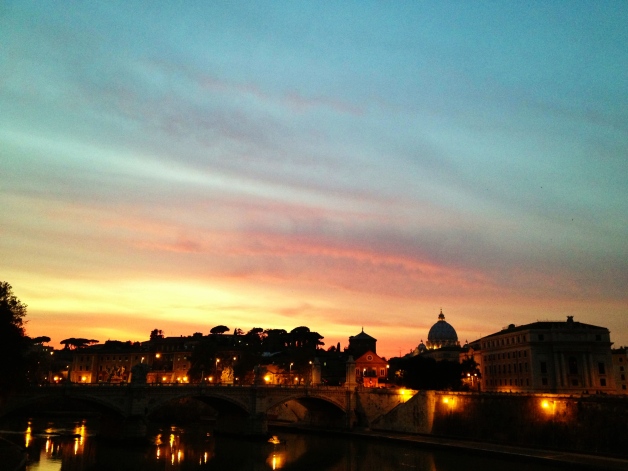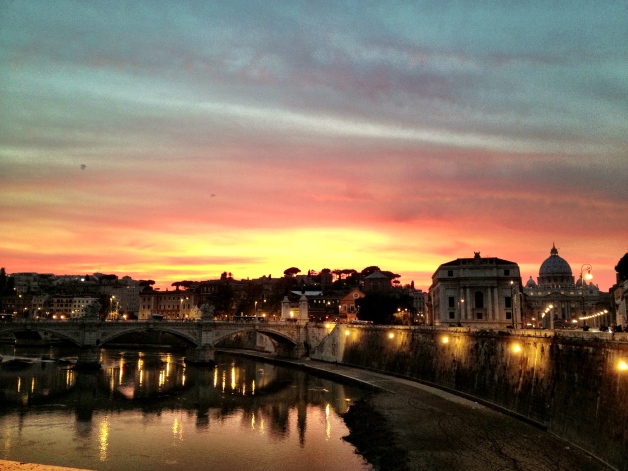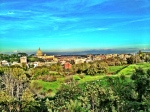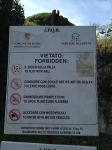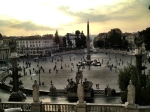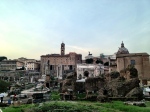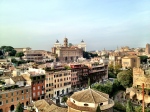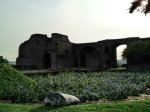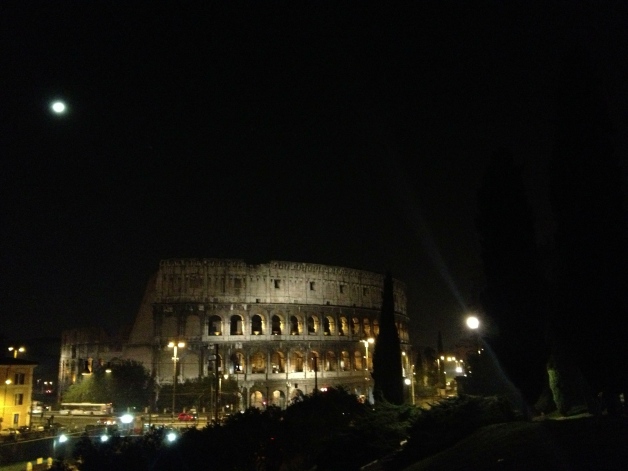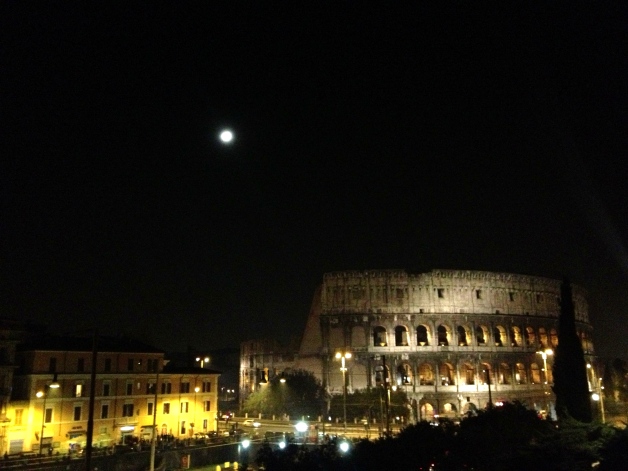The highlight of my time in Nepal was an eight-day hike into the Himalayas, alone but for my guide, Bijay. Bijay lives outside of Kathmandu but spends the majority of the year in the wilderness, trekking or guiding or staying at his parents’ “mountain home” in remote Western Nepal (you have to hike for several days to reach it; there are no roads). I met Bijay on Couch Surfing, he gave me a good deal, and he turned out to be a fabulous guide. Here is the link to his personal trekking website.
After discussing about a thousand trekking options with Bijay, I decided to hike to Tsergo Ri Peak in Langtang National Park. This trek involved a 9-hour bus ride from Kathmandu, 6 straight days of wilderness hikin’ for a total of 80+km on foot, and another 9-hour bus ride back to the capitol.
Langtang is well known in Nepal for its beauty and environmental diversity. Its extreme variations in topography enable several different vegetation zones to exist within just a few kilometers of each other – one of very few places in the world where this happens. It was really cool hiking through a thick, damp jungle-y forest one day, the next day through alpine timberline, the next through a red-bush-filled prairie, and the next over a snowy, rocky, barren, Mars-like terrain.
It’s hard to organize this post, because the entire experience covered 8 days and I want to share exactly 8 million stories and experiences with you. But that’s not possible, so I’ll try to condense and be succinct and also show you several yak pictures because I know that will make you happy.
Yak pictures make everyone happy.
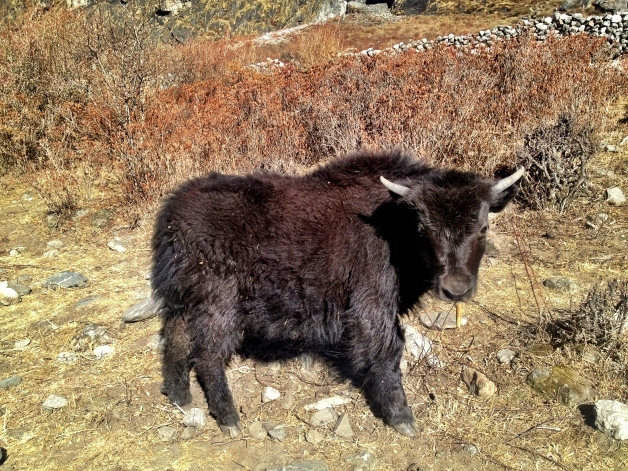 Anyway. The trekking adventure began with the bus ride to the village near the trailhead, at the edge of Langtang. This village is only 36 km, as a bird flies, from KTM. The road that leads there is 140 km long. It took our bus around 9 hours to make the drive. It was, for all intents and purposes, a 9-hour-long adrenaline rush. I was completely and utterly exhausted by the time we arrived, even though I’d just been sitting all day. It was both terrifying and exhilarating. But mostly terrifying. Dad, maybe you shouldn’t read the next few paragraphs.
Anyway. The trekking adventure began with the bus ride to the village near the trailhead, at the edge of Langtang. This village is only 36 km, as a bird flies, from KTM. The road that leads there is 140 km long. It took our bus around 9 hours to make the drive. It was, for all intents and purposes, a 9-hour-long adrenaline rush. I was completely and utterly exhausted by the time we arrived, even though I’d just been sitting all day. It was both terrifying and exhilarating. But mostly terrifying. Dad, maybe you shouldn’t read the next few paragraphs.
Bijay and I boarded a public bus and departed from KTM at 7:30 AM. Within a half hour we were out of KTM Valley, heading up into the mountains on a single-lane road. Another half hour and the road turned to dirt, and dust, and rocks. Big ass rocks. And no shoulder on either side. On one side, a steep wall of earth. On the other, a plummeting drop far, far, far down. Now the cliff’s on your left. Now it’s on your right. Now left, now right again. Up and down the mountainsides, up and down, between 1400 and 4000 meters altitude, crazy switchbacks all the way. You’re maybe going 20-30 miles an hour, but it seems mighty fast. Your bus is loaded, packed with people, with bags and boxes, with a huge metal wheel (?), with sacks of grain, with lumber. Bijay tells you there will also occasionally be a cage of chickens stuffed in the aisle, or a goat.
 The bus is full, with people standing in between the seats, and there are between 5 and 15 people riding on the roof at any given time, as well. You can see their shadow when the sun is just right, the silhouettes of teenage Nepali boys clinging to your and 60 other peoples’ bags strapped to the roof. The bus careens down the road, kicking up dust, hitting and rolling over rocks you think are just a bit too big to be safe. The bus tips precariously as it rolls over the boulders, just far enough onto the edge of its wheels, cliff-side, to make your heart skip a beat. Again, and again. You clutch the seat in front of you, which is broken and falling hard against your knees.
The bus is full, with people standing in between the seats, and there are between 5 and 15 people riding on the roof at any given time, as well. You can see their shadow when the sun is just right, the silhouettes of teenage Nepali boys clinging to your and 60 other peoples’ bags strapped to the roof. The bus careens down the road, kicking up dust, hitting and rolling over rocks you think are just a bit too big to be safe. The bus tips precariously as it rolls over the boulders, just far enough onto the edge of its wheels, cliff-side, to make your heart skip a beat. Again, and again. You clutch the seat in front of you, which is broken and falling hard against your knees.
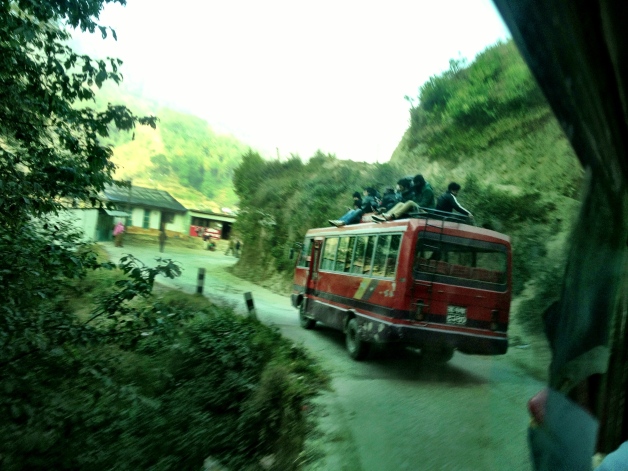 You are torn between admiring the beauty of the terraced farmland below you and panicking at the thought of the bus rolling down the hill, which seems wholly possible with one false move of the driver. Bollywood and Indian rap songs play loudly, on loop. The girl in front of you vomits out the window three times. Two boys in the back are passed puke bags, as well. The winding road is single lane all the way, and really a bit too narrow for the large bus. But it’s the only road there is. You realize this is going to be one hell of a ride.
You are torn between admiring the beauty of the terraced farmland below you and panicking at the thought of the bus rolling down the hill, which seems wholly possible with one false move of the driver. Bollywood and Indian rap songs play loudly, on loop. The girl in front of you vomits out the window three times. Two boys in the back are passed puke bags, as well. The winding road is single lane all the way, and really a bit too narrow for the large bus. But it’s the only road there is. You realize this is going to be one hell of a ride.
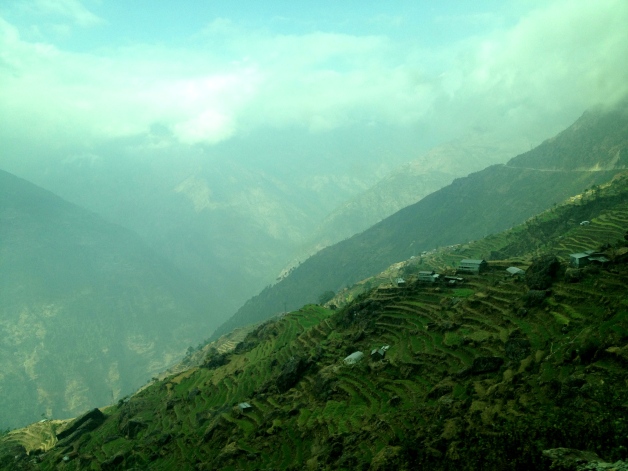
You can see the thin line of brown road curving around the mountain on the right.

Sybrubesi, the village where we stayed the night before beginning the trek.
Just 70km outside of Kathmandu, my Nepali guide stopped recognizing the language spoken by the people living there. The culture had completely changed. If you read about it, Nepal is actually crazily diverse. All the more reason to get out of KTM! I wrote in my journal after the long bus ride: “The people live so remotely in their little stone or metal houses, placed here and there amidst steep mountainsides of terraced crops…no roads but the ‘main’ one…near Tibet, just 25km away as a bird flies. Police checkpoints every 15 minutes of driving. Buddhist area – prayer flags and stupas everywhere.”
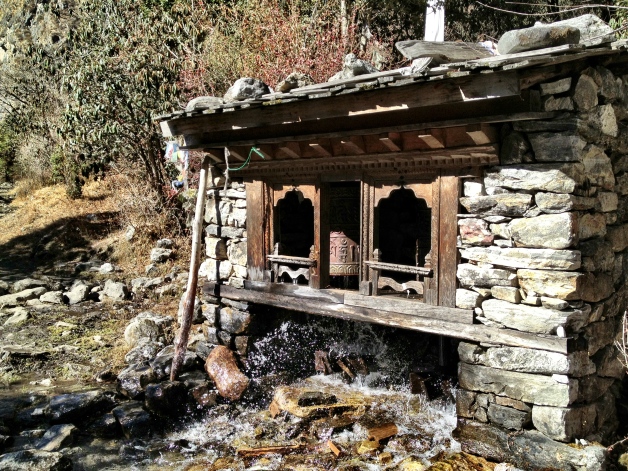
Prayer wheels being turned by the stream water, in the middle of the remote mountains.
The next four days, Bijay and I trekked into the wilderness, away from electricity, away from dirt roads, away from people, away from civilization. Into the wild, into the forest and icy Himalayan air, into these massive mountains, into Sherpa country and nearly into Tibet. (Then we hiked back out in two more days. Much less epic, but still amazing).

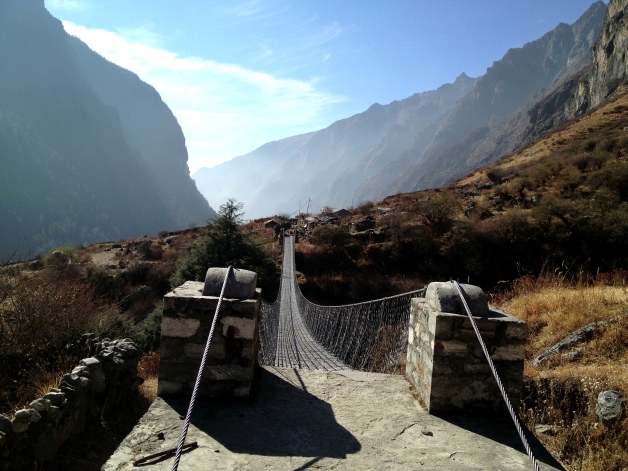 Here’s part of my journal entry after the first day: “…a beautiful and interesting hike. All the while, alongside a bright blue, freezing glacial river. Swift and powerful. Subtropical forest. Steep rocky trail covered in donkey and cow droppings. Passed a shepherd’s makeshift home as well as a few traditional mountain villages. Houses of rocks and mud. Monkeys everywhere. /…Tomorrow we’re going to end the day at a ‘big village’ of about 300 people. No roads – only walking in and out. Unbelievable how remote everything is. Bijay said this is nothing; some people in remote areas of Western Nepal can only get food by helicopter. /…At least a few hikers/guides die or go missing doing this trek every year. One was a 25-year-old woman from Colorado, missing since 2010, no one has any idea what happened to her. She simply disappeared. This fall, a guide died by falling off a cliff, though they think he may have been drunk… Constant reminders to play it safe, never underestimate this nature. The mountains will always win. It’s humbling…”
Here’s part of my journal entry after the first day: “…a beautiful and interesting hike. All the while, alongside a bright blue, freezing glacial river. Swift and powerful. Subtropical forest. Steep rocky trail covered in donkey and cow droppings. Passed a shepherd’s makeshift home as well as a few traditional mountain villages. Houses of rocks and mud. Monkeys everywhere. /…Tomorrow we’re going to end the day at a ‘big village’ of about 300 people. No roads – only walking in and out. Unbelievable how remote everything is. Bijay said this is nothing; some people in remote areas of Western Nepal can only get food by helicopter. /…At least a few hikers/guides die or go missing doing this trek every year. One was a 25-year-old woman from Colorado, missing since 2010, no one has any idea what happened to her. She simply disappeared. This fall, a guide died by falling off a cliff, though they think he may have been drunk… Constant reminders to play it safe, never underestimate this nature. The mountains will always win. It’s humbling…”

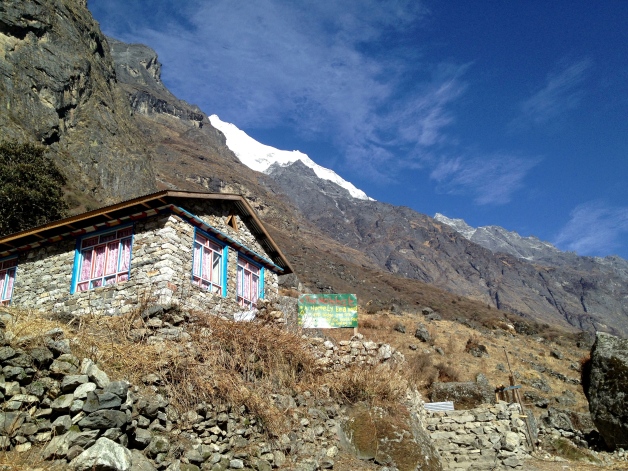
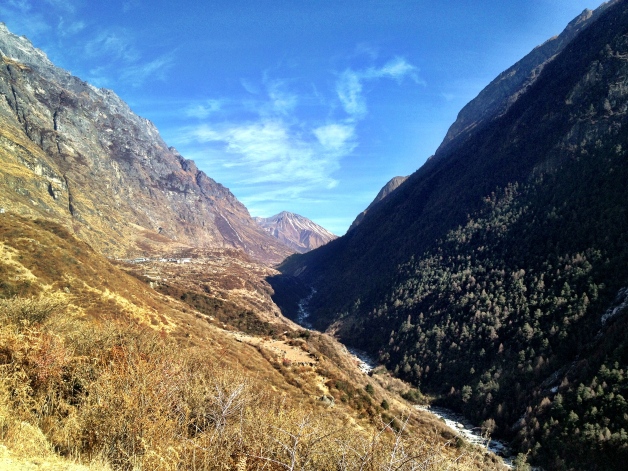
You can just see the red-and-white-striped peak of Tsergo Ri in the distance, my ultimate destination!
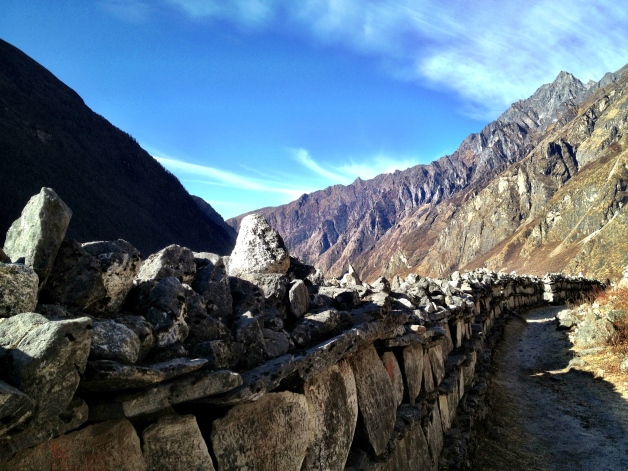
This is called a Mani wall. They are built periodically along the valley by Tibetan Buddhists. The stones are carved with ancient spiritual inscriptions to remember the dead. Some of the Mani walls are over 400 years old.
The second day of hiking, we reached Langtang Village at over 3,000 meters, the point at which you begin to feel the effects of altitude. From my journal: “…In a Tibetan language, Lang=yak and Tang=home (this village is home to yaks). / …Prayer flags everywhere. Walk clockwise around the stupas. Vast valley below us, snow-capped peaks all around. Huge no-name waterfalls. Yaks and monkeys. Red berry trees. I stood outside when we got here, watching the thick clouds roll up towards me from below, covering the Buddhist flags in a white haze. I can’t believe I’m here…”
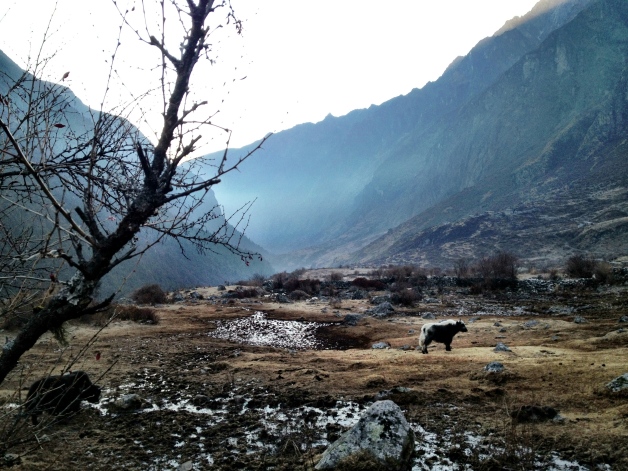
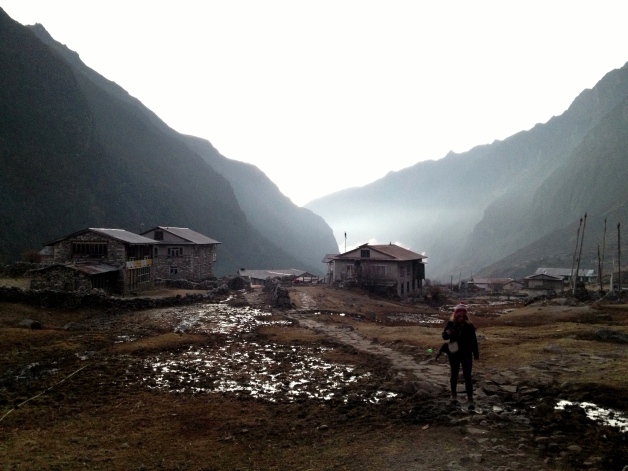
A frigid Himalayan dusk and my fabulous new Aussie friend Priya, the only other woman I met on my trek.
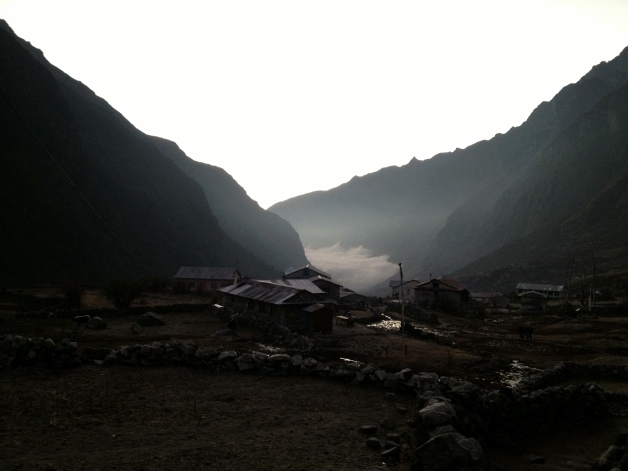
Clouds rolling up towards me from the valley below.
The third day, we reached Kyanjin Gumpa, a town near the end of a broad valley, at 3,870 meters. I wrote, “It is freezing in this mountain village. Freezing and unbelievably beautiful.” I did not feel my hiking ability had diminished due to altitude, though perhaps I slowed down a bit between Langtang Village and Kyanjin Gumpa. However, I could tell I was way, way high up when I tried to sleep. Breathing in bed was almost painful – mostly, I think, because the air was icy, icy cold, and before acclimatizing, you have to breathe deeply to get enough of that precious O2 into your lungs. The cold air woke me up a little bit more each time I took a breath. Trying to keep my head inside my sleeping bag was also ineffective, as this was suffocating after just a few minutes.
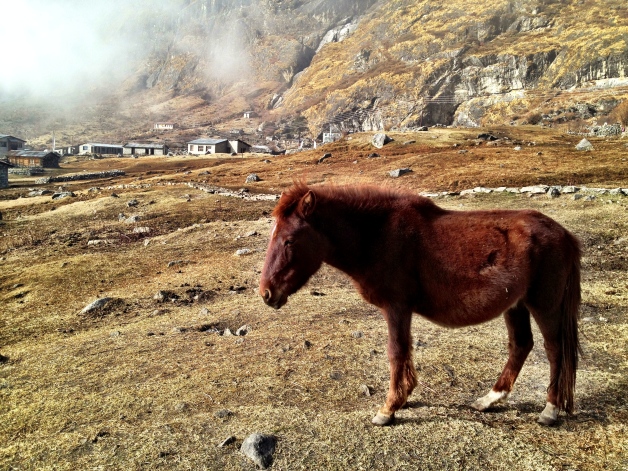
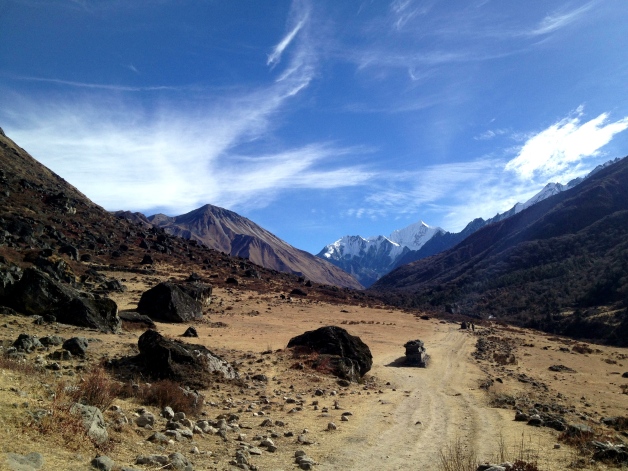
See that reddish mountain in the distance, on the left? I climbed that.

Another Mani wall.
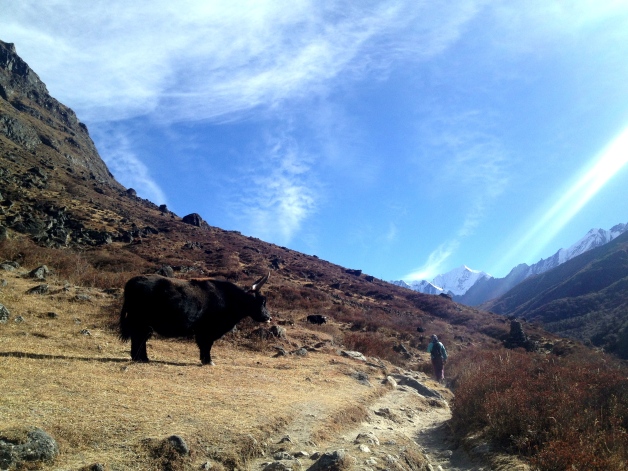
GIANT YAK.
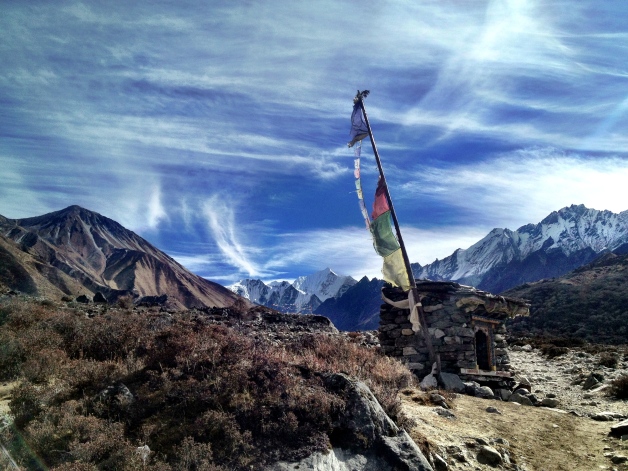
Another view of the mountain I will soon climb, as well as a stone structure housing a prayer wheel, spun by the rushing water of a hidden stream below.
I should mention at this point that the air in my bedroom was ice cold because the trekking lodges Bijay and I stayed in along the route were made of rough stone, uninsulated, and unheated. You could often see through the gaps in the stone walls to the frozen ground and windblown yaks outside. The only warmth we received was during mealtimes, and then only in the lodge kitchens from the small wood or gas fires used to prepare food. And starting on the second day of trekking, temperatures fell near or below freezing from early evening until mid morning.
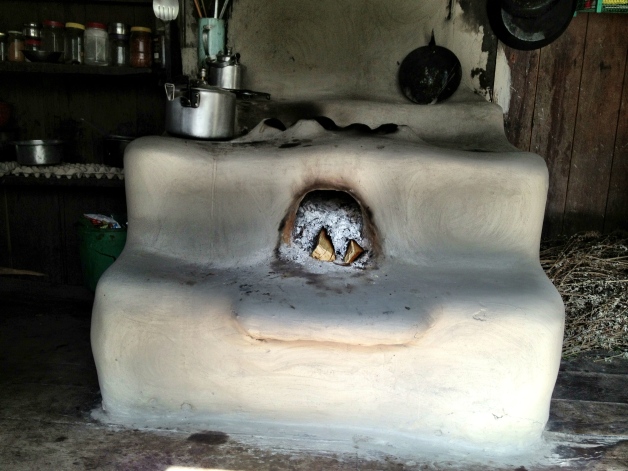
This type of cook stove was used in every tea house along the trek, for cooking and warmth. But mostly for cooking.
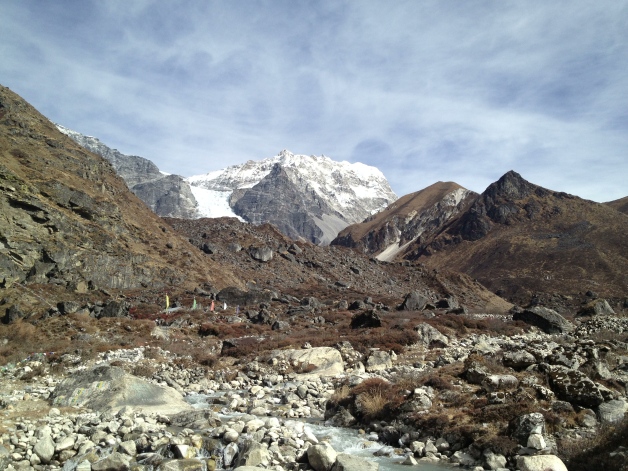
It was really cold here.
A little explaining: along major trekking routes in Nepal, there is at least one small guesthouse located every 4-8 hours of hiking. These guesthouses are staffed by locals year-round, paid for by trekking fees. The accommodation is very basic, usually involving a single bed in a simple room and an often cold shower or bucket bath. Hot meals are available, but in the off-season, when I did my trek, options may be limited. After all, every single item of food (and everything else, for that matter) must be carried in on foot from the nearest town, which becomes progressively farther and farther away the higher into the remote Himalayas you climb.
Along the trek, we frequently crossed paths with local people carrying MASSIVE baskets of goods up the mountain. I always felt super lame when we’d pass a little old man with a towering basket of firewood or canned food or water bottles strapped to his back and around his forehead, as I panted and sweated up the trail with my much lighter pack, its name-brand hip-straps snugly fitted to maximize comfort… Another effect of seeing these porters was that I never, ever wasted any food along the way. I would just cry if I spent my days lugging 60- or 70-pound containers of food up the mountains only to see a dumbass tourist toss out half her plate of rice.
Bijay told me that during high season, the guesthouses may become so crowded with trekkers that you have to wait hours for a meal. My trek was in mid-December, at the tail end of the shoulder season, and I was pleased that I wasn’t constantly surrounded by other people. I love hiking because it takes me into the woods, away from society, into places where I can be present with nothing but nature and my thoughts and huge, vast, sprawling landscapes not even worth attempting to photograph for all their glory and beauty and intensity and otherworldliness. Also, after physically strenuous hiking all day, the last thing I would want to do is have to navigate a social situation involving a small kitchen packed with tourists from all over the world, all vying for food and heat from the fire. I only met a few other people along my trek, and this was wonderful because I really got to know a few of them, which I doubt would have happened if there were many more of us out there. However, throughout the entire trek, I didn’t run into any other Americans, I met very few women, and I didn’t meet any other woman trekking alone but for her guide.
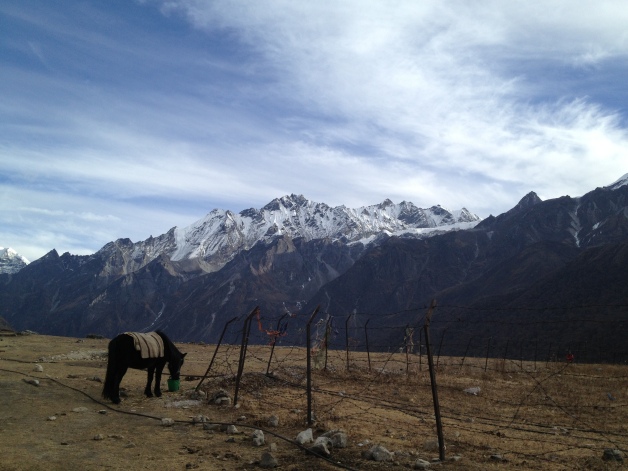
The view from the small mountain village of Kyanjin Gumpa, 40km from the nearest road.
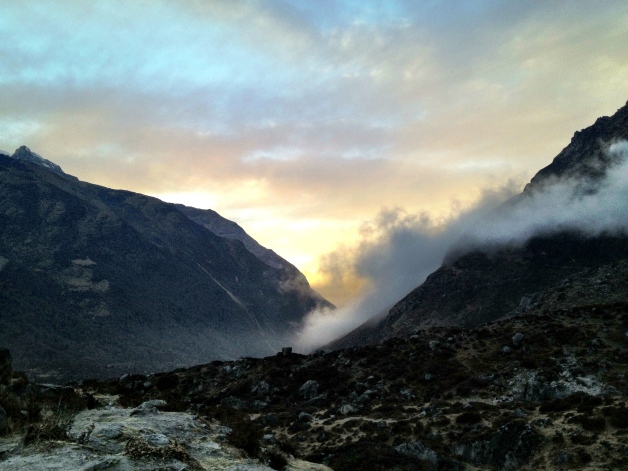
Sunset in Kyanjin Gumpa.
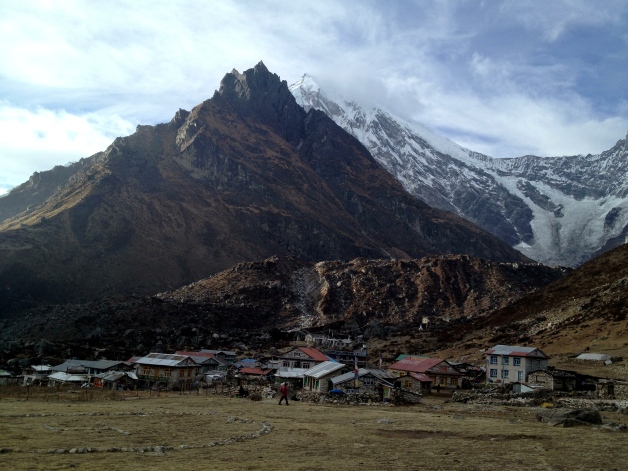
Kyanjin Gumpa, 3870m.
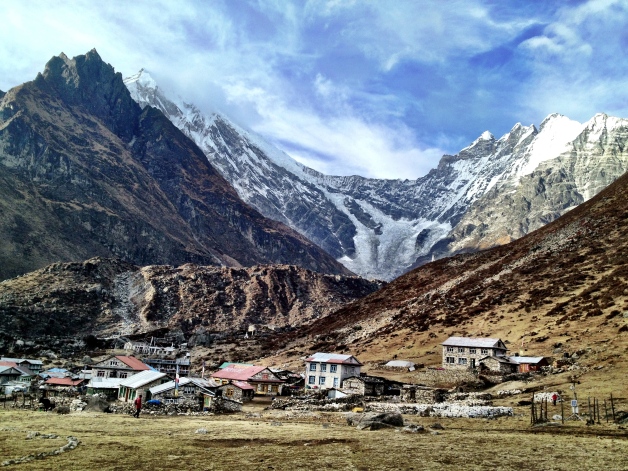
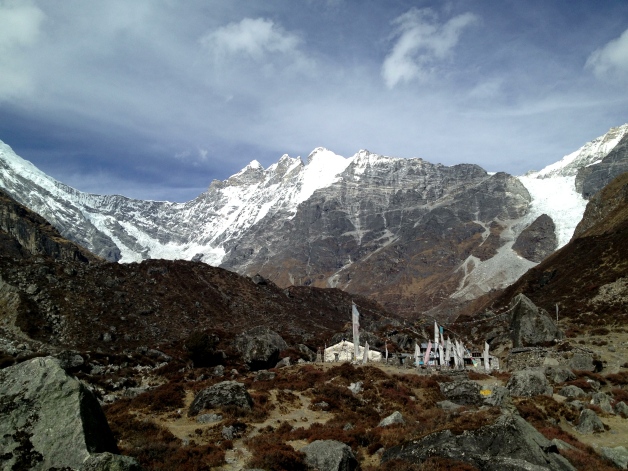
 The fourth day, Bijay and I awoke early and quickly ate porridge in the freezing and dark final moments of Himalayan pre-dawn. Our goal on this day was to summit Tsergo Ri, a 4,875m peak overlooking Kanyjin Gumpa, its top covered in waving prayer flags and offering a stunning 360-degree panorama of snow-capped peaks all around, some nearly 8,000m tall. I had never been that high before – my record was just below 4,000m in Colorado, and even that, I wasn’t totally sure about (I had to turn back on that hike due to lightning above the tree line, so I don’t know exactly how high I made it). But I really, really wanted to make it to the top of Tsergo Ri. I prayed the altitude wouldn’t do me in before I summited the clouded peak.
The fourth day, Bijay and I awoke early and quickly ate porridge in the freezing and dark final moments of Himalayan pre-dawn. Our goal on this day was to summit Tsergo Ri, a 4,875m peak overlooking Kanyjin Gumpa, its top covered in waving prayer flags and offering a stunning 360-degree panorama of snow-capped peaks all around, some nearly 8,000m tall. I had never been that high before – my record was just below 4,000m in Colorado, and even that, I wasn’t totally sure about (I had to turn back on that hike due to lightning above the tree line, so I don’t know exactly how high I made it). But I really, really wanted to make it to the top of Tsergo Ri. I prayed the altitude wouldn’t do me in before I summited the clouded peak.

Just beginning the hike up to Tsergo Ri, that stripey beast up ahead.
Bijay and I set out for the mountain just as the sun was coming up, though the sky was dark and foreboding, and the wind strong. The water in my Camelbak froze after just a few minutes of hiking. Thankfully Bijay was smart enough to fill his canteen with warm water, so we were able to share that on the way up. We climbed silently. Soon, we reached the 4,000m mark, after which I noted that every step I took was a new personal altitude record. And every step was slower than the last. I didn’t feel dizzy or faint, but I felt winded and tired. I reassessed my physical state every few minutes, knowing that I’d have to turn back if I started to feel altitude sickness. Happily, I never did, I think because I went so slowly. That said, we still made it to the peak in 3.5 hours, though Bijay said it usually takes at least 4. I consider that a win.
A few views from along the hike up:
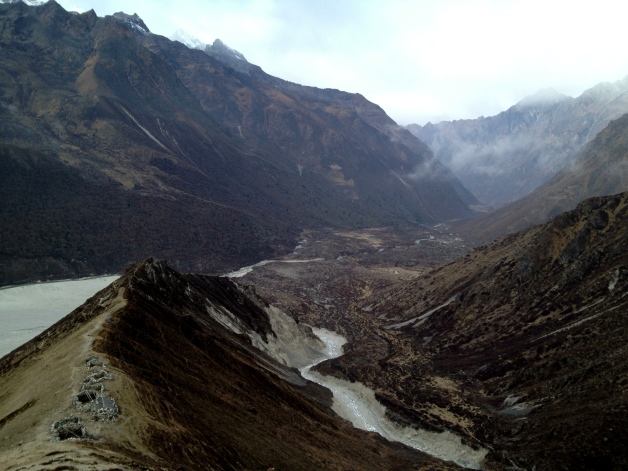
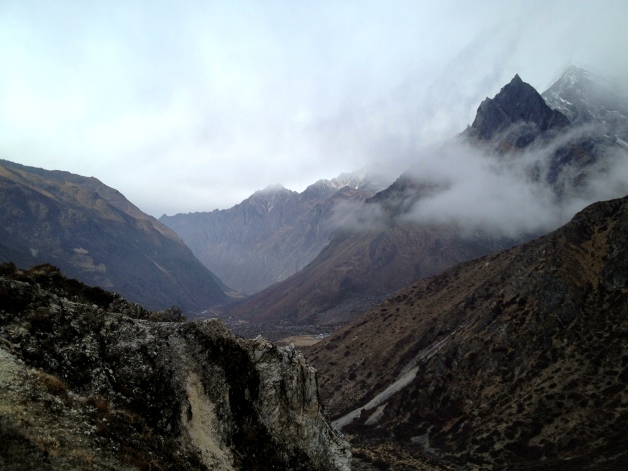

Nearly there…
About the hike to the peak, I wrote in my journal: “Extremely steep dirt trails, near vertical but no plants or trees to hold on to. Windy and icy cold all the way. I felt like a snail. Wind blowing violently. Snow made visibility very poor.”
About an hour from the peak, it began to snow. The wind whipped the clouds around us, obscuring our visibility. For the rest of the climb, I couldn’t see farther than about 3 meters in front of me – just enough to catch the blue of Bijay’s hat up ahead. The hiking was safe, as we were simply going up, not along a cliff or through a forest. We were climbing up a huge field of big rocks, using hands and feet, and at times pulling ourselves up very steep, barren dirt paths. Exhausting. I had one of those brief mental fallbacks where I took stock of how it felt to be there in that snowstorm, at that altitude, not being able to see any view at all – “This sucks! Why do I do this? Why do I think this is fun? What is wrong with people, that we do these tortuous things for fun?!” – but then, suddenly, we were at the top.
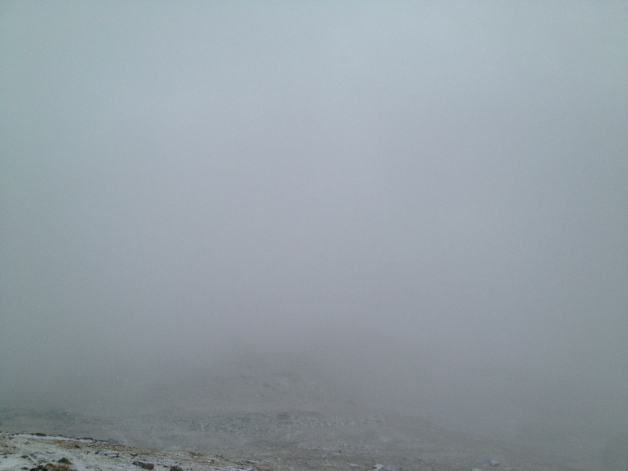
Visibility during the snow storm, close to 5,000 meters.
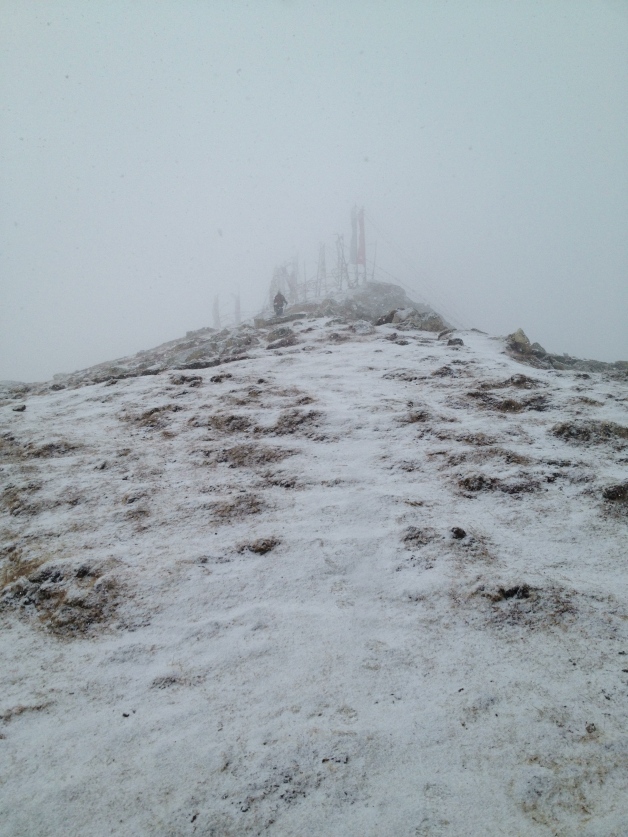
A view of the peak, through the blowing snow.
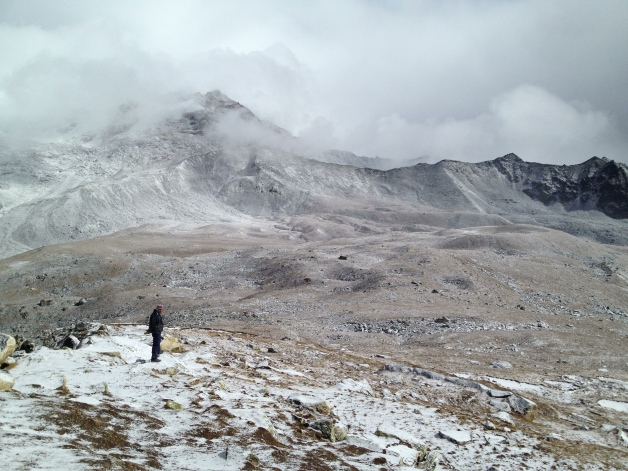
Couldn’t see too far in the storm, but what we could see was splendid.
We sat behind a boulder in an attempt to shelter ourselves from the whipping wind and the stinging snow. We huddled and we shivered and we laughed at the fact that we worked our asses off to climb to the top of the world, only to be caught in a white whirlwind that kept us from seeing anything around or below us. The fact that I may have physically and mentally pushed myself harder than ever before, for no reason other than the challenge itself, made me feel a bit silly. But miraculously, within about 10 minutes, the snow suddenly stopped. The cloud around us blew to another peak across the valley. And we saw the vast, vast earth below and around us on every side.
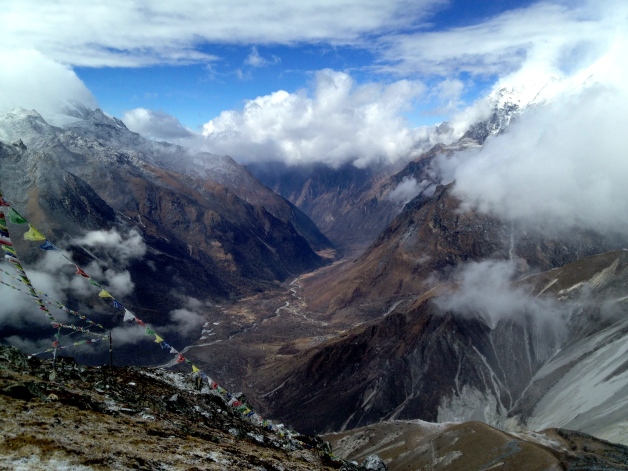

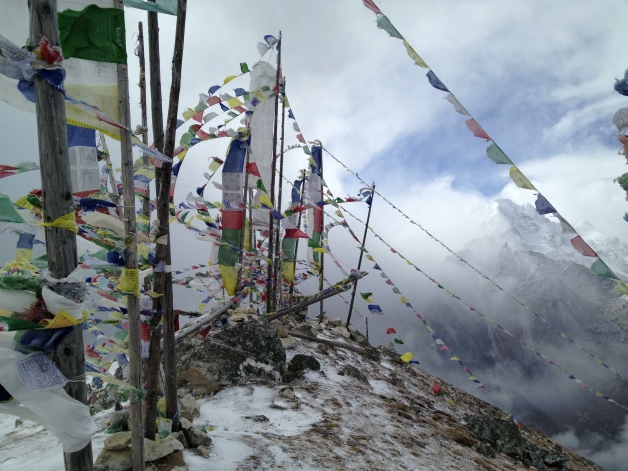
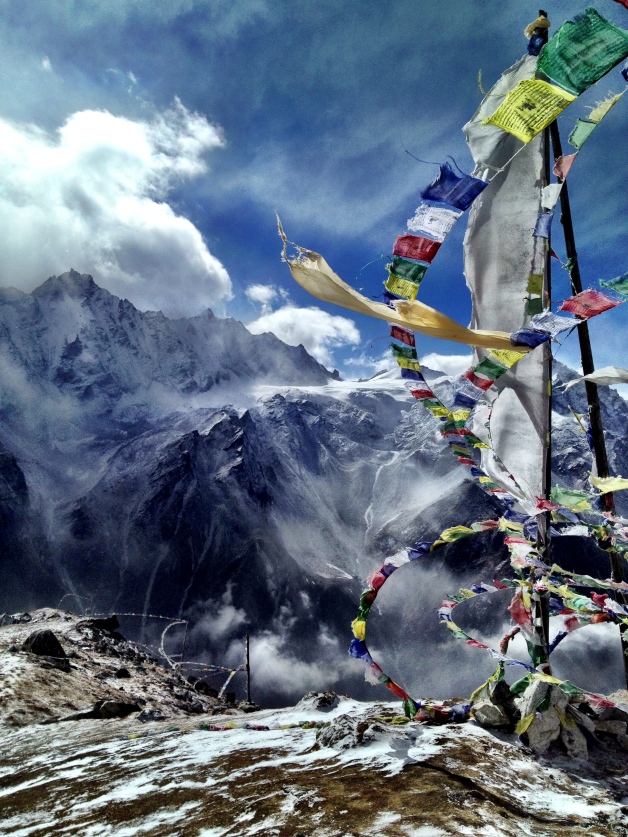 I was so excited by the view that I actually started running and skipping back and forth across the summit, snapping photos and joyfully exclaiming expletives. But very quickly, the altitude reminded me that I really shouldn’t be running and jumping or doing anything faster than a snail’s pace at this point, so I surrendered my physical enthusiasm and simply stood in awe, munching a frozen piece of chapati and trying to keep my fingers from going completely numb. “The Himalayas are f*cking huge.”
I was so excited by the view that I actually started running and skipping back and forth across the summit, snapping photos and joyfully exclaiming expletives. But very quickly, the altitude reminded me that I really shouldn’t be running and jumping or doing anything faster than a snail’s pace at this point, so I surrendered my physical enthusiasm and simply stood in awe, munching a frozen piece of chapati and trying to keep my fingers from going completely numb. “The Himalayas are f*cking huge.”
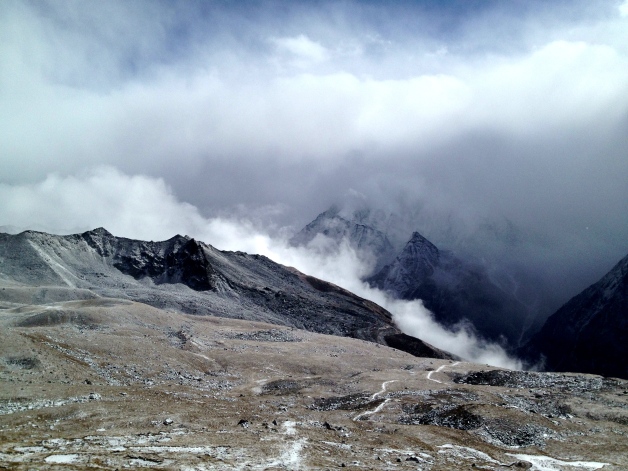
Above the clouds…
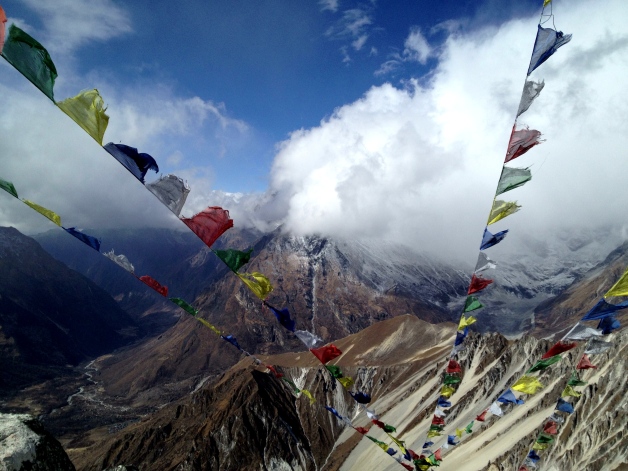
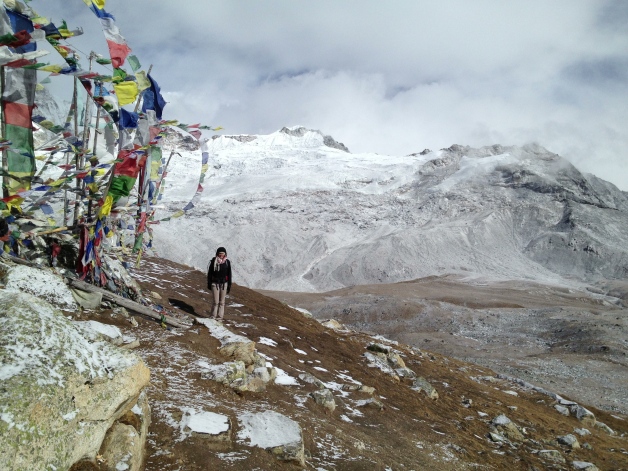
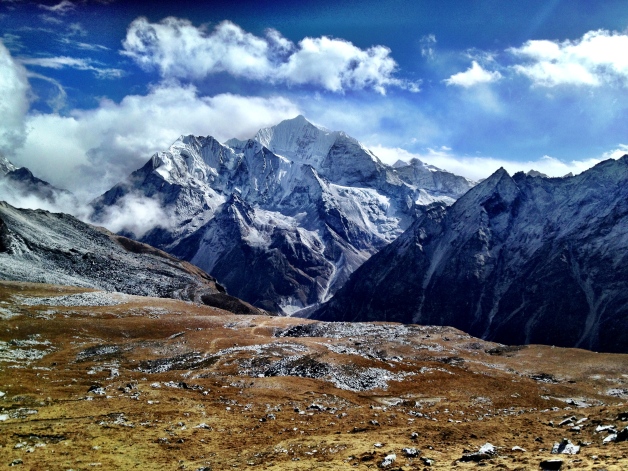
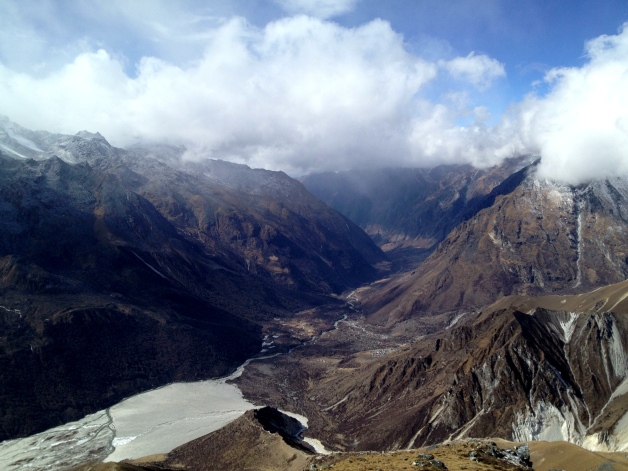
Before we began our descent (“I felt like shit most of the way down”), I pocketed a tiny pebble from the highest point on the peak of Tsergo Ri. I am not really a sentimental person, and I certainly don’t collect things, but this mountain was not only my biggest physical feat ever but is also higher than the highest mountain in the Alps and the highest I may ever climb. I hope it’s not, but you never know.
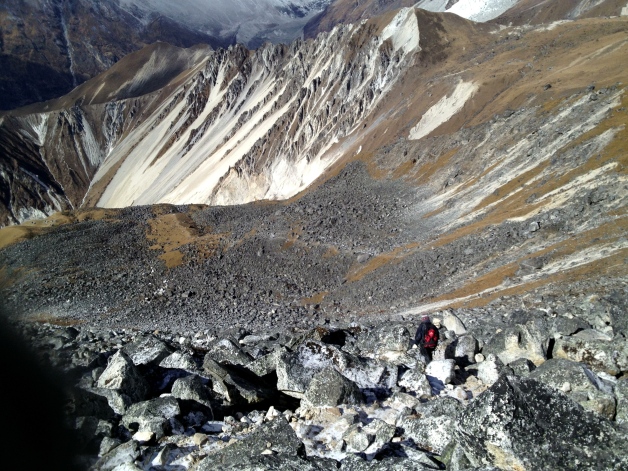
Rocky trek down over 1,000m…please excuse my finger, the goin’ was rough.
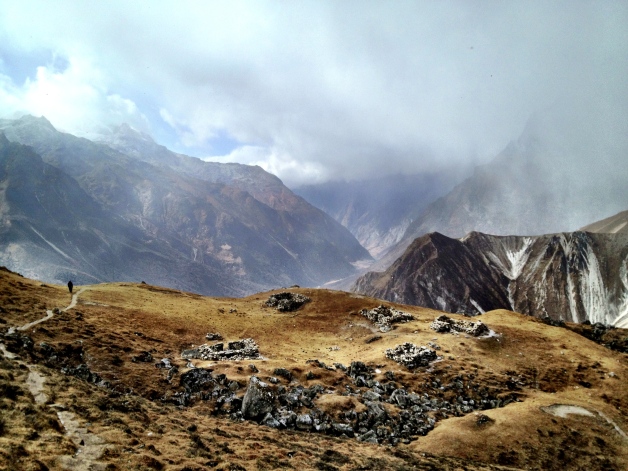
OUR HOME PLANET IS SO INCREDIBLE.
Side note: A 33-year-old Swedish personal trainer I met in Kyanjin Gumpa also climbed Tsergo Ri during the snowstorm. He’d previously summited Everest Base Camp and Mt. Kilimanjaro. He had the body of a god and was clearly born to overcome all sorts of physical challenges in his life. But he told me that Tsergo Ri was the most challenging climb he’d ever done, due to the weather conditions and the rapid increase in altitude (we climbed up over 1000m [after already starting at 3870m above sea level] in a matter of hours as opposed to taking a few days to gradually reach higher altitudes, like on Everest). So, this made me feel pretty empowered, as a smallish American woman who is certainly not a gloriously chiseled Swedish personal trainer and certainly not built by the gods to champion all types of incredible physical feats in life. I JUST REALLY FRIGGIN’ LOVE MOUNTAINS! IT WAS SO EPIC!
The next two days, Bijay and I made our way back down through all the vegetation zones, starting in snowy Kyanjin Gumpa, hiking along scenic ridges, and across glacial streams, to the warm and sunny village where we began nearly a week earlier. Then came the 9-hour heart-stopping bus ride back to my host family’s house in Kathmandu, where I gleefully took a real hot shower and hand-washed my absolutely disgusting trekking clothes.
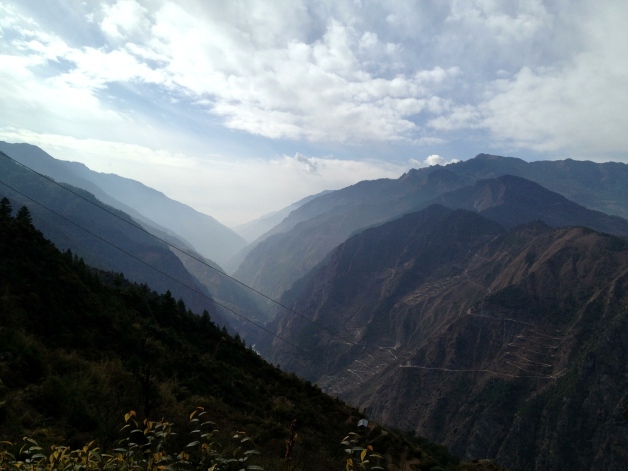
View from the way down. You can see a squiggly road on the mountain across the valley. That’s the way home…

Almost back down to the town!
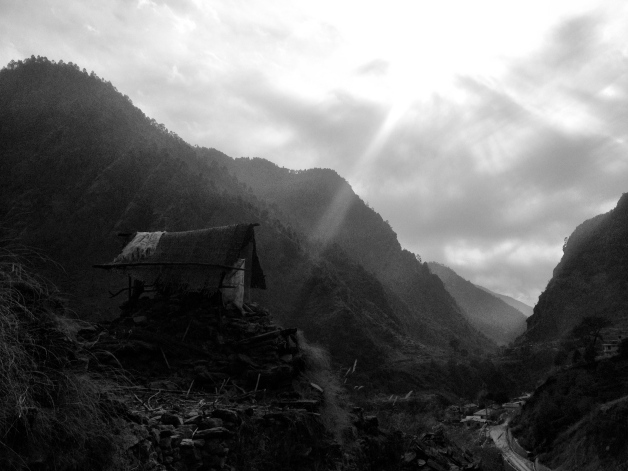 I miss the Himalayas already. My brief journal entry from the final day of the trek reads, “Trying to reflect on how I feel but maybe it’s too soon…I feel like I just completed something amazing, like I am so much physically stronger than I could ever have imagined, and that I really want a good, long, hot yoga class.”
I miss the Himalayas already. My brief journal entry from the final day of the trek reads, “Trying to reflect on how I feel but maybe it’s too soon…I feel like I just completed something amazing, like I am so much physically stronger than I could ever have imagined, and that I really want a good, long, hot yoga class.”
By now, I’ve had some more time to think about the trek, but I’ll just share one brief note on my reflections. Since August, I have written in my journal, “Actually, this was the most incredible thing I have ever done in my life” on three separate occasions. I think it’s safe to say 24 turned out to be a pretty fab year.
Here’s another yak photo.
